When my husband Daniel and I travel to new cities, we don’t always go for the traditional touristy things or guided tours. We like to see things at our own pace and often avoid the super popular destinations. But with a city packed with so much history, we couldn’t help it. We spent hours researching the best things to do in Istanbul and immersed ourselves in the incredible sights.
Straddling the continents of both Asia and Europe, Istanbul really is a place where east meets west and where modern and ancient cultures intersect. The mosques, museums and palaces in this city are so amazing that they really can’t be missed.
That being said, we did have some favorites out of the bunch so if you are short on time you can prioritize your sightseeing based on the list below.
Top Things to do in Istanbul
Here’s a roundup of our favorite things to do in Istanbul:
- Hagia Sophia – stunning Byzantine cathedral turned mosque, now a museum
- Topkapı Palace – opulent home of the sultans in the 15th and 16th centuries
- Basilica Cistern – underground water reservoir constructed by Emperor Justinian I
- Süleymaniye Mosque – grand mosque constructed on the highest point of the city
- The Grand Bazaar and Spice Bazaar – one-of-a-kind shopping experience
- Kariye Museum (Chora Church) – museum featuring Byzantine mosaics
- Whirling Dervish Performance – mesmerizing ceremony focused on the inner discovery of god
- Istanbul Archaeological Museum – neat old stuff looted from other places
- The Galata Tower – medieval tower with a panoramic view of the city
- Blue Mosque – historic mosque known for its hand-painted blue tiles
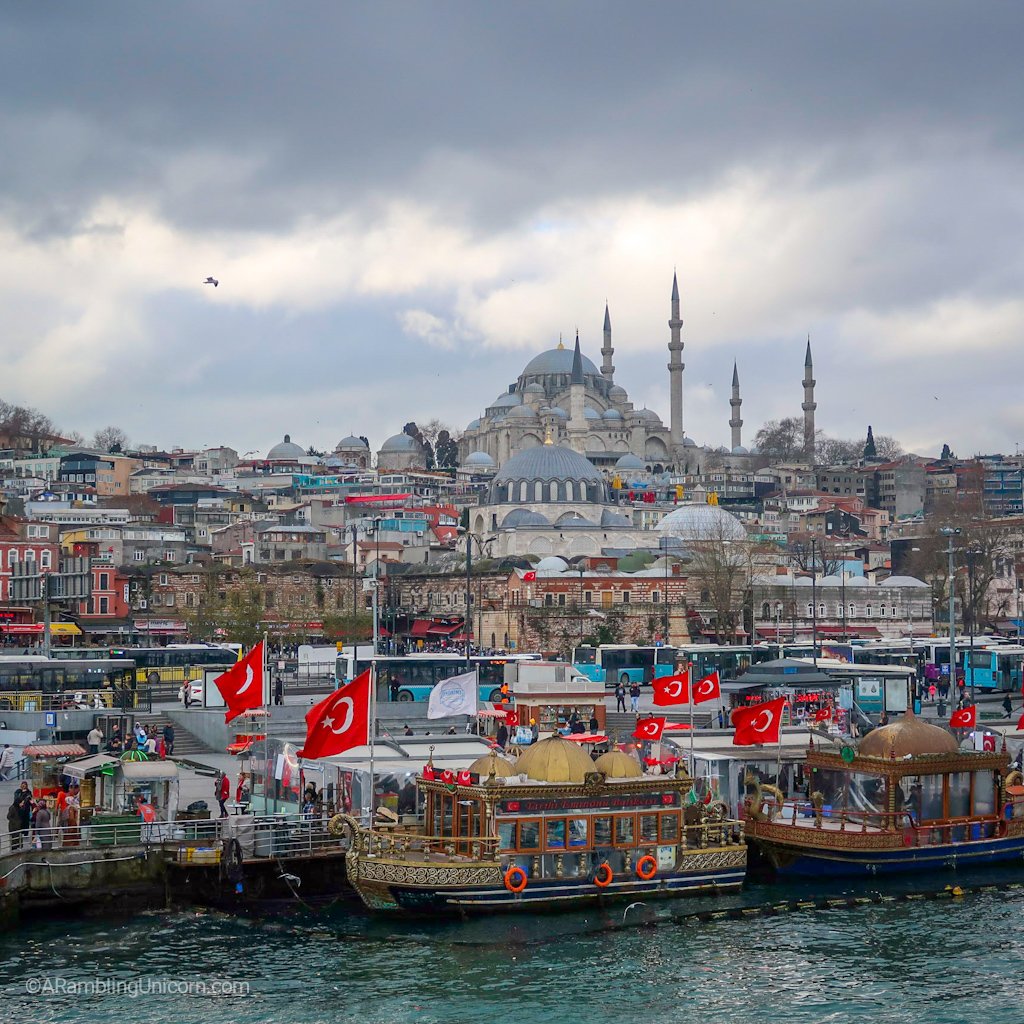
The Süleymaniye Mosque as viewed from the Galata Bridge.
The Hagia Sophia (Aya Sofia)
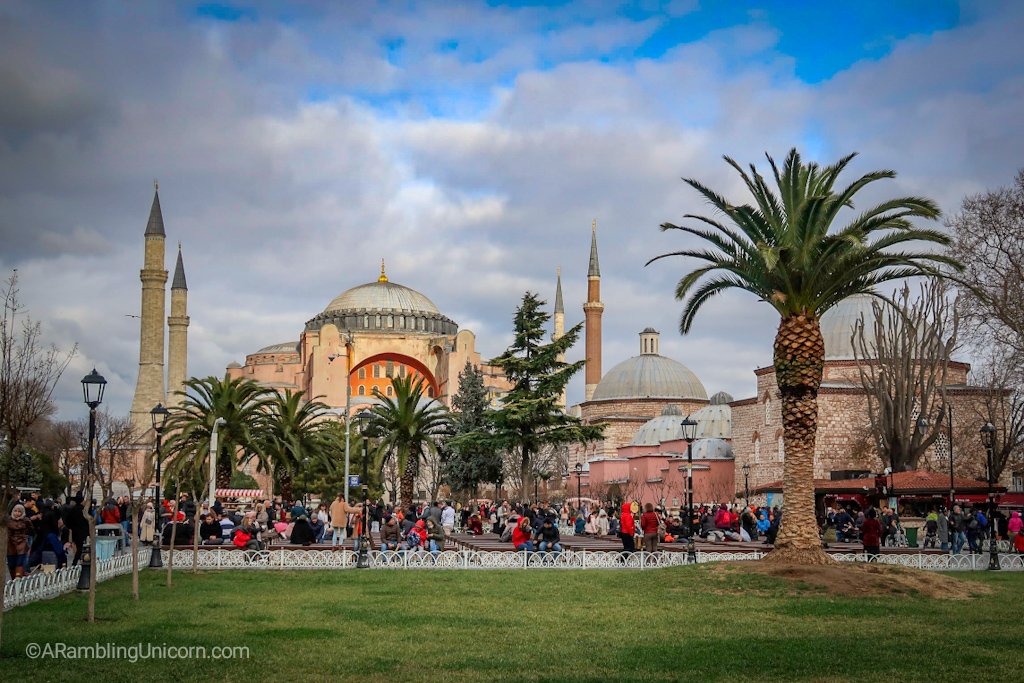
The Hagia Sophia.
Originally constructed in 537, the Hagia Sophia was the world’s largest building and Christendom’s greatest cathedral for nearly a millennium. The cathedral was converted to a mosque in 1493 when Istanbul (then called Constantinople) was conquered by the Ottoman Empire. During the conversion, minarets were implemented on the roof, the Christian mosaics were plastered over and Islamic scripture was added throughout the building.
Now a museum and one of the best things to do in Istanbul, the Hagia Sophia is a true example of the city’s east-meets-west culture. During its conversion to a museum, plaster was removed to uncover spectacular Byzantine mosaics below. However, great care was also taken to preserve the Islamic art and calligraphy in order to maintain a balance between both Christian and Islamic cultures.
During our visit, scaffolding blocked off a portion of the museum’s interior due to renovation efforts. It was fascinating to see the results of the renovation efforts which is clearly visible before and after the scaffolding in the pictures below.
Click on a photo in the mosaic below to see more detail.
- Hagia Sophia – Islamic Symbol on Display
- Hagia Sophia
- Hagia Sophia
- Hagia Sophia
- Hagia Sophia – Tiled Mosaic
- Hagia Sophia
- Hagia Sophia – Tiled Mosaic
- Hagia Sophia
- Hagia Sophia
- Hagia Sophia
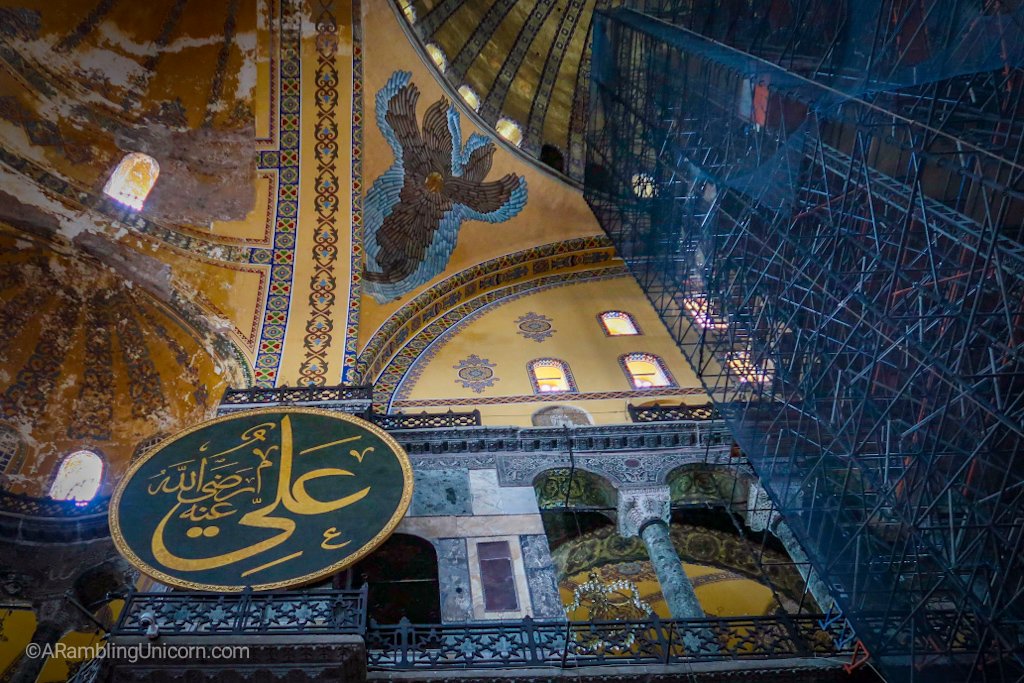
The effects of the restoration efforts are clearly visible in this photo.
Topkapı Palace Museum
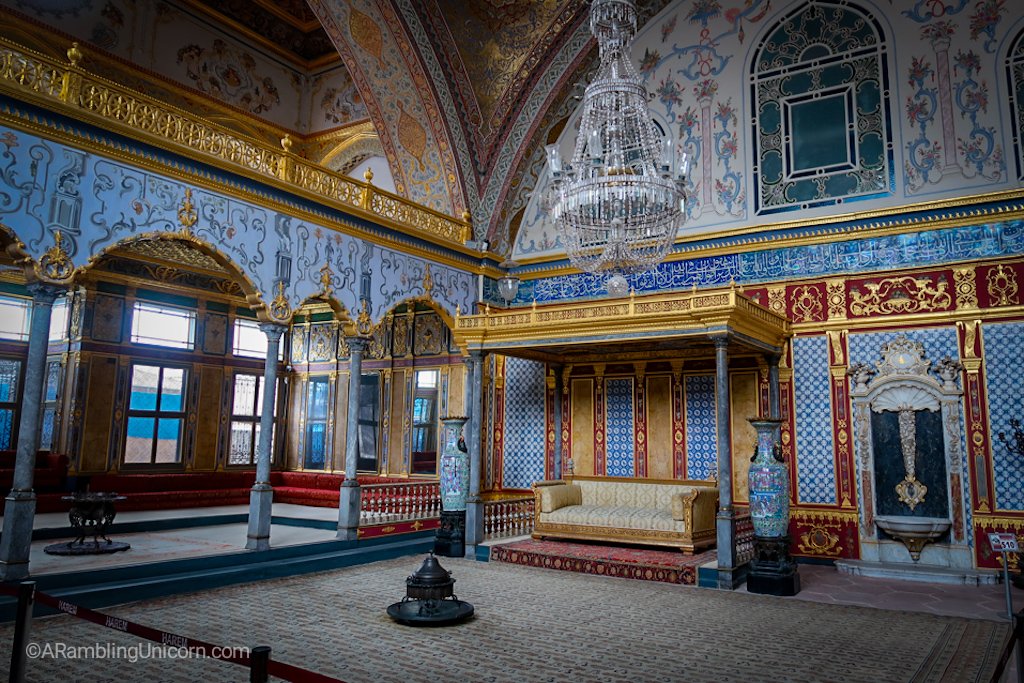
Topkapı Palace Harem – Imperial Hall.
The Topkapı Palace served as the primary residence of the Ottoman sultans in the 15th and 16th centuries. Another one of best things to do in Istanbul, this sprawling complex is comprised of four courtyards nestled next to one another. From collections of royal weapons to working kitchens and harem chambers to holy relics, the Topkapı Palace has a wide array of rooms and historic items on display for visitors. The harem (the sultan’s private chambers) costs extra to visit but I highly recommend it – they are the most opulent and stunning rooms of the entire palace.
The palace is absolutely enormous and we badly underestimated the amount of time that it would take to see the entire grounds. If we had it to do over again, we would devote an entire day to visiting Topkapı. I would also set aside some extra time to visit the Privy Chamber which houses a collection of sacred Islamic relics. As we were running low on time during our visit, we rushed into the Privy Chamber not knowing what it contained and rushed right out again when we realized it was a sacred space and we didn’t want to appear rude.
Click on a photo in the mosaic below to see more detail.
- Topkapı Palace Harem – Imperial Hall
- Topkapı Palace Harem – the Court of the Black Eunuchs
- Topkapı Palace Harem – Imperial Hall
- Topkapı Palace Harem from outside
- Topkapı Palace
- Topkapı Palace – Imperial Council Room
- Topkapı Palace – Imperial Council Room
- Topkapı Palace
- Topkapı Palace
- Topkapı Palace Harem – Imperial Hall
- Topkapı Palace Harem – Entrance to the baths
- Topkapı Palace Library
- Topkapı Palace Harem – the royal bath
- Topkapı Palace
- The lawns outside of Topkapı Palace
- Topkapı Palace – Gate of Salutation
Basilica Cistern
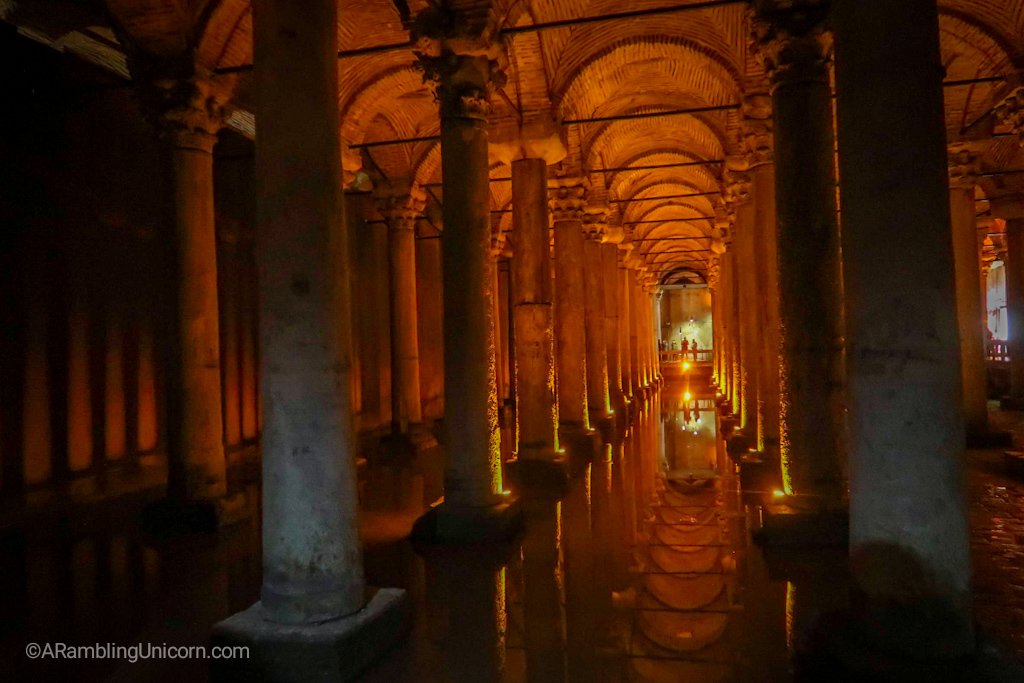
The Basilica Cistern.
Constructed in the 6th century during the reign of Byzantine Emperor Justinian I, the Basilica Cistern provided water to the Great Palace of Constantinople as well as local residents for hundreds of years. Most of the columns used in the construction of the cistern were re-purposed from the ruins of older buildings. Of special note are the two Medusa Head column bases at the end of the cistern – these are clearly re-purposed from some other building but their origin is unknown.
It doesn’t take long to visit the cistern but I highly recommend it. The amber lighting transforms a space that could be creepy into a magical underground wonderland. As we entered the cistern, I was reminded of The Lord of the Rings when the fellowship enters the abandoned splendor of the Mines of Moria. Truly spectacular.
Click on a photo in the mosaic below to see more detail.
- Basilica Cistern
- Basilica Cistern – Medusa’s Head
- Basilica Cistern
- Basilica Cistern
- Basilica Cistern
- Basilica Cistern – Medusa’s Head
- Hanging out in the Basilica Cistern
Süleymaniye Mosque
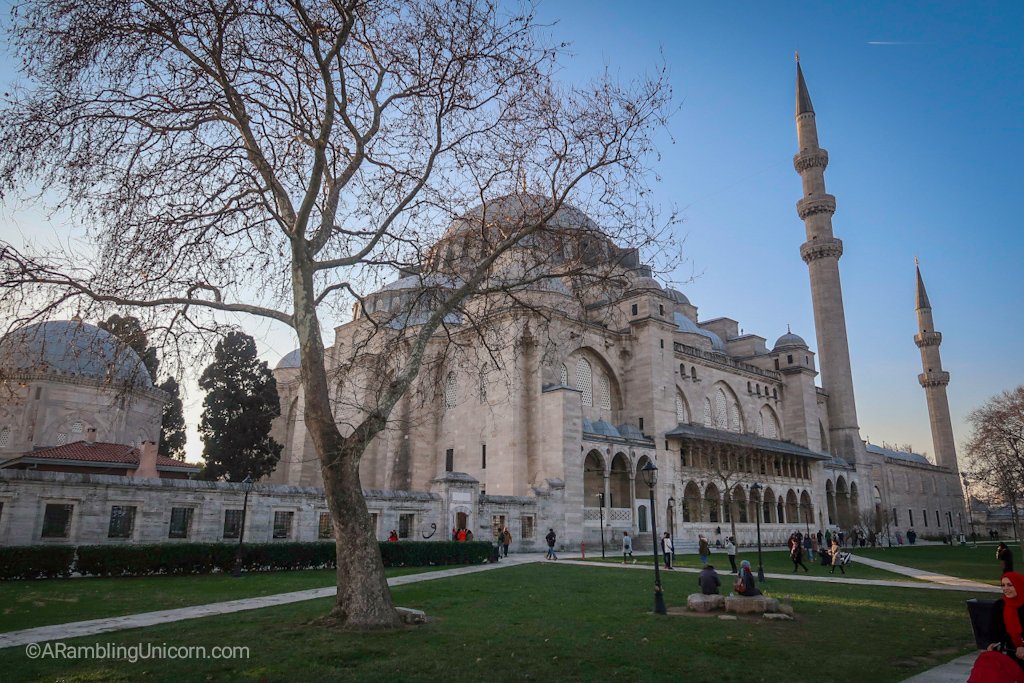
The Süleymaniye Mosque.
Commissioned by Suleiman the Magnificent in 1550, the majestic Süleymaniye Mosque stands on the tallest point of the city and is clearly visible from afar. One of the grandest and most beautiful mosques in Istanbul, the Süleymaniye Mosque also has great views of the Bosphorus and The Golden Horn. It’s a terrific place to watch the sunset.
Most tourists in Istanbul flock to the Blue Mosque, located next to Hagia Sophia and one of the top things to do in Istanbul, but I recommend visiting the Süleymaniye Mosque if you have to choose between the two. It’s much less crowded and the insides are not blocked off by construction and renovation (at least when I visited in January 2020). As when visiting all mosques, you will need to remove your shoes prior to entering and women should cover their heads.
Click on a photo in the mosaic below to see more detail.
- Süleymaniye Mosque
- Süleymaniye Mosque
- Süleymaniye Mosque
- Süleymaniye Mosque
- Süleymaniye Mosque
- Süleymaniye Mosque
- Süleymaniye Mosque
- Süleymaniye Mosque
- Inside the Süleymaniye Mosque
- Inside the Süleymaniye Mosque
- View from the Süleymaniye Mosque
- View from the Süleymaniye Mosque at sunset
- The Süleymaniye Mosque at dusk
The Grand Bazaar and Spice Bazaar
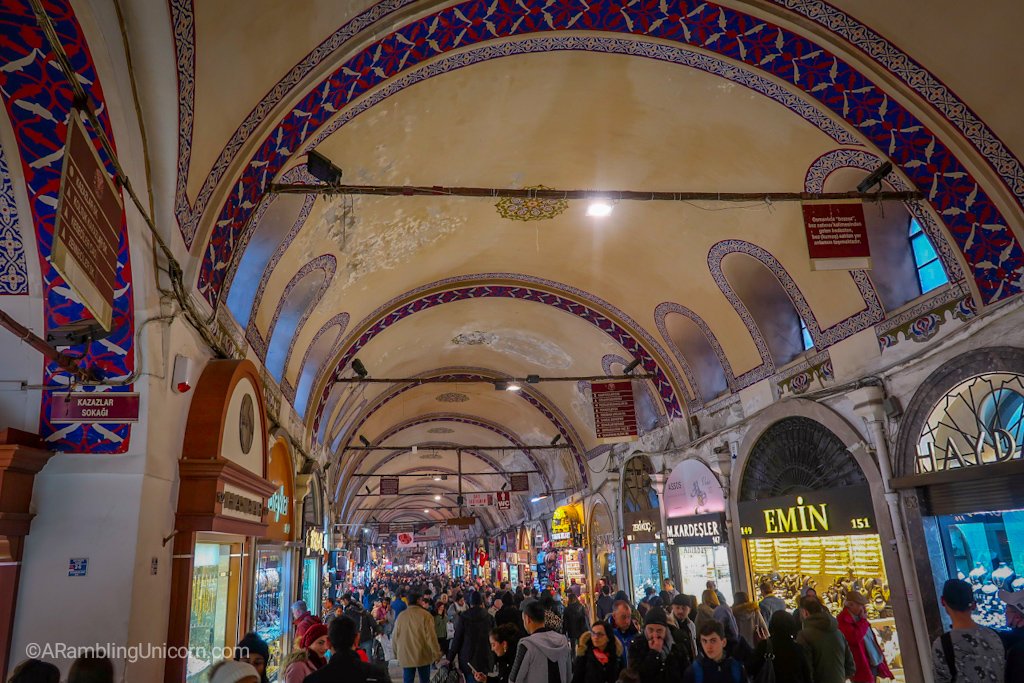
The Grand Bazaar.
A visit to Istanbul is not complete without a visit to one of its famous bazaars. One of the largest and oldest covered markets in the world, the Grand Bazaar attracts between 250,000 and 400,000 visitors daily and is definitely one of the top Istanbul tourist sights. A smaller sibling to the Grand Bazaar, the Spice Bazaar functions as the center of the spice trade in Istanbul and is also very popular. It is also a great place to pick up a scarf – which ladies can wear as head coverings when visiting any of the city’s mosques.
Be prepared to deal with some crowds when visiting The Grand Bazaar and The Spice Bazaar. If insanely busy crowds packed into tight covered spaces aren’t your bag then you might want to sit this one out. We enjoyed our visits to the bazaars but to be honest we found the crowds a bit overwhelming so didn’t stay too long.
Click on a photo in the mosaic below to see more detail.
- The Spice Bazaar
- The Spice Bazaar
- Entrance to the Grand Bazaar
- The Grand Bazaar
- The Grand Bazaar
- The Grand Bazaar
- The Spice Bazaar
- The Grand Bazaar
- The Grand Bazaar
- The road outside the The Grand Bazaar
Kariye Museum (Chora Church)
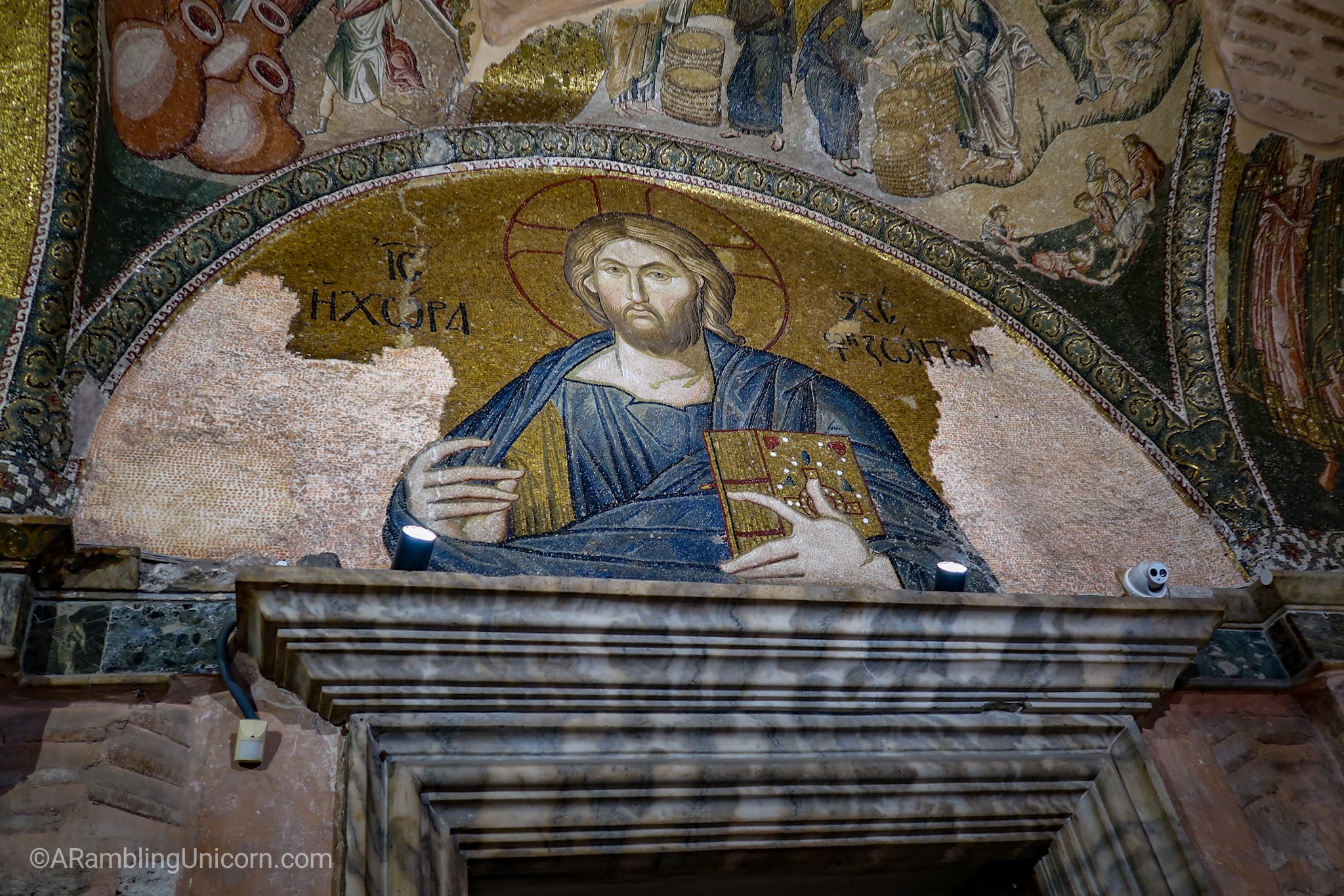
Like the Hagia Sophia, the Church of the Holy Savior in Chora (Kariye Museum) is another example of a Byzantine cathedral turned mosque that is now a museum. Although a bit of a trek from the other museums and palaces in the city, the museum is worth a visit for the fabulous mosaics and frescoes covering the walls. We were a little disappointed to find access to much of the church blocked off during our visit in January 2020, however, due to ongoing renovation efforts.
The future of Kariye Museum is a source of much debate. In 2019, a Turkish court ruled that the museum must be converted back to a mosque, sparking an international outcry and concern over preservation of the buildings historic artwork.
Click on a photo in the mosaic below to see more detail.
- Chora Church
- Chora Church
- Chora Church
- Chora Church
- Chora Church
- Chora Church
- Chora Church
Whirling Dervish Performance
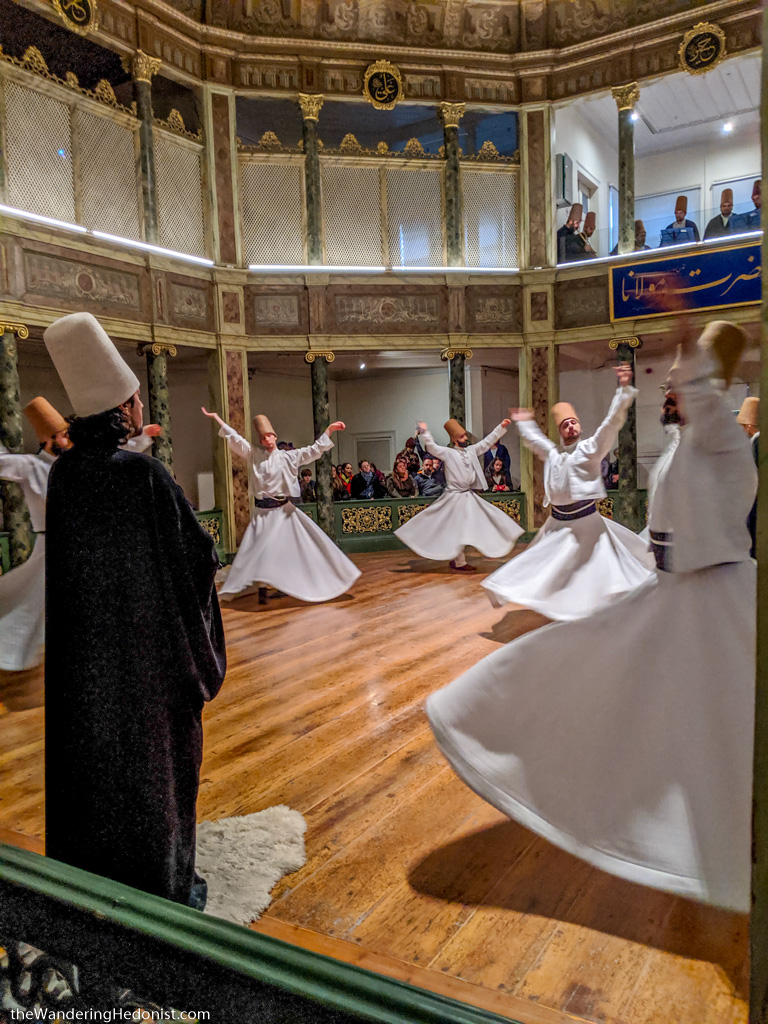
Whirling ceremony at the Galata Dervish Museum.
The Dervish are a sect of Suni Muslim mystics who followed the 13th century Sufi mystic Rūmī and focus on the inward discovery of god. The whirling ceremony used to be a weekly practice that included all members of the order, but was discontinued after the fall of the Ottoman Empire when Sufi organizations were declared illegal. The ceremonies are now permitted again by the Turkish government and the Dervish perform a weekly whirling ceremony on Sunday evenings in the Galata Dervish Museum (Galata Mevlevihanesi Müzesi).
Daniel and I were lucky enough to get tickets for the event and were absolutely mesmerized by the performance. Pro tip: arrive well before the doors open to ensure you get a good seat. Seating is on a first-come, first-served basis and there was already a long line for the event when the doors opened 30 minutes prior to the beginning of the ceremony.
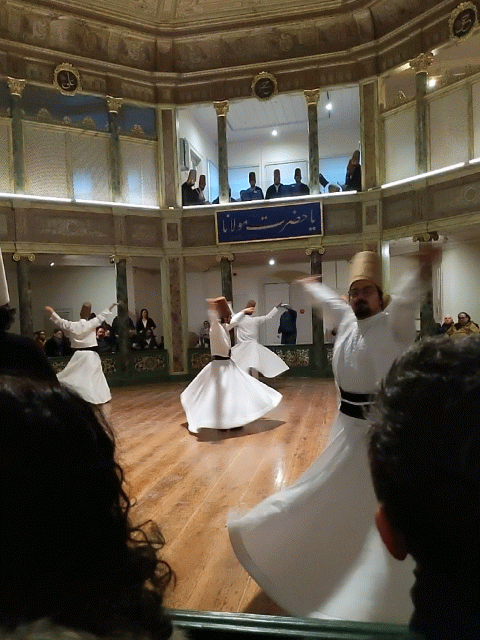
Whirling ceremony at the Galata Dervish Museum.
Istanbul Archaeological Museum
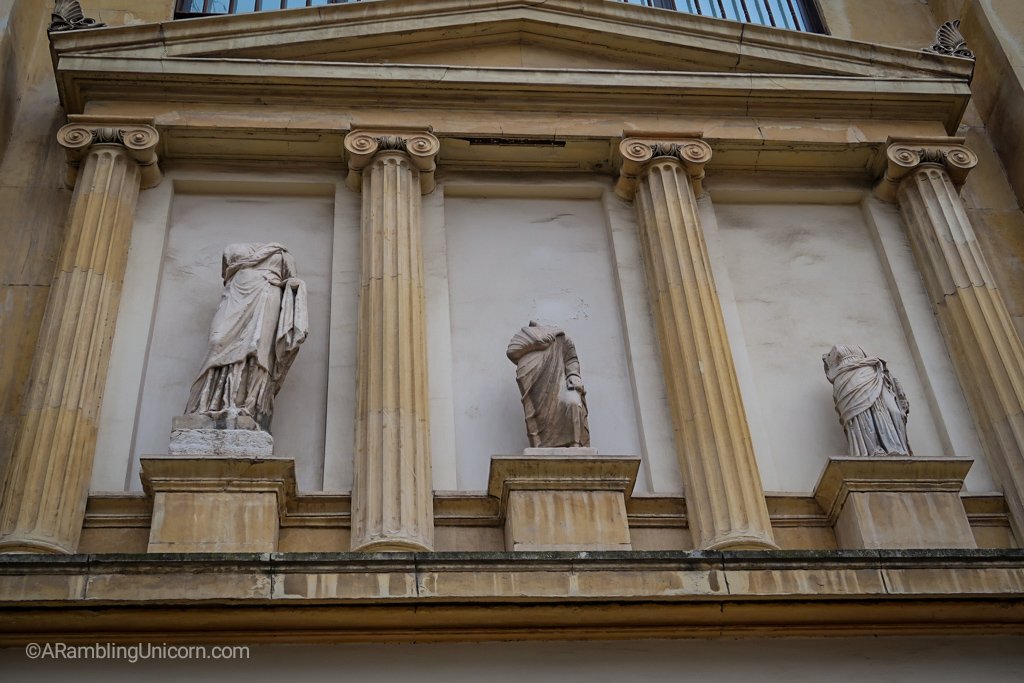
These statues have no heads! Outside the Istanbul Archaeological Museum.
Located next to the Topkapı Palace, the Istanbul Archaeological Museum is another popular ti. The grounds include three buildings: The Archaeological Museum, The Museum of Ancient Oriental Works, and The Tiled Kiosk Museum. I had mixed feelings about the mummies and mausoleums on display in the Archaeological Museum – as Daniel writes in his blog post Visiting the mosques, palaces, and antiquity of Istanbul, Turkey, “The main hall is essentially a celebration of grave robbery with many tombs and gravestones and their contents”.
We found the exhibits in the museum interesting but honestly compared to the other amazing attractions in Istanbul it wasn’t on the top of our list. My favorite part of the museum was a section of gravestones inscribed with curses and warnings to would-be-looters and grave-robbers. I’ve included one along with the translation of the inscription below.
Click on a photo in the mosaic below to see more detail.
- Istanbul Archaeological Museum – Tiled Pavilion
- Sarcophagus of the Mourning Women
- Statue of a King: Shalmaneser III (858-824 B.C.)
- Alexander Sarcophagus
- Another elaborate sarcophagus
- Istanbul Archaeological Museum Gardens
- Sarcophagus
- The Tiled Pavilion
- Moulding of rock relief (8th Century B.C.)
- The Tiled Pavilion
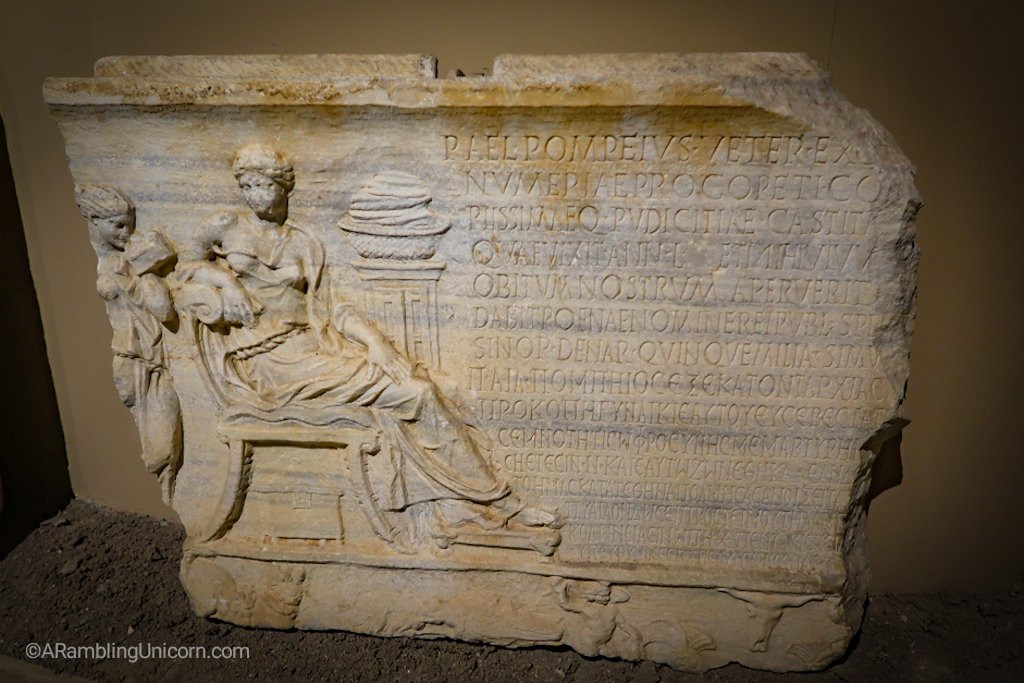
This inscription reads: “Publius Aelius Pompeius, a retired captain from Carnuntum, has made (this grave) for his wife Procope, the most pious with much dignity, known for her virtues, who has lived for fifty years himself in his lifetime: If anyone dares to open and for this sarcophagus after our burial, he will pay five thousand denarii as a fine to the brilliant colony of Sinope and will be responsible for grave looting.”
The Galata Tower
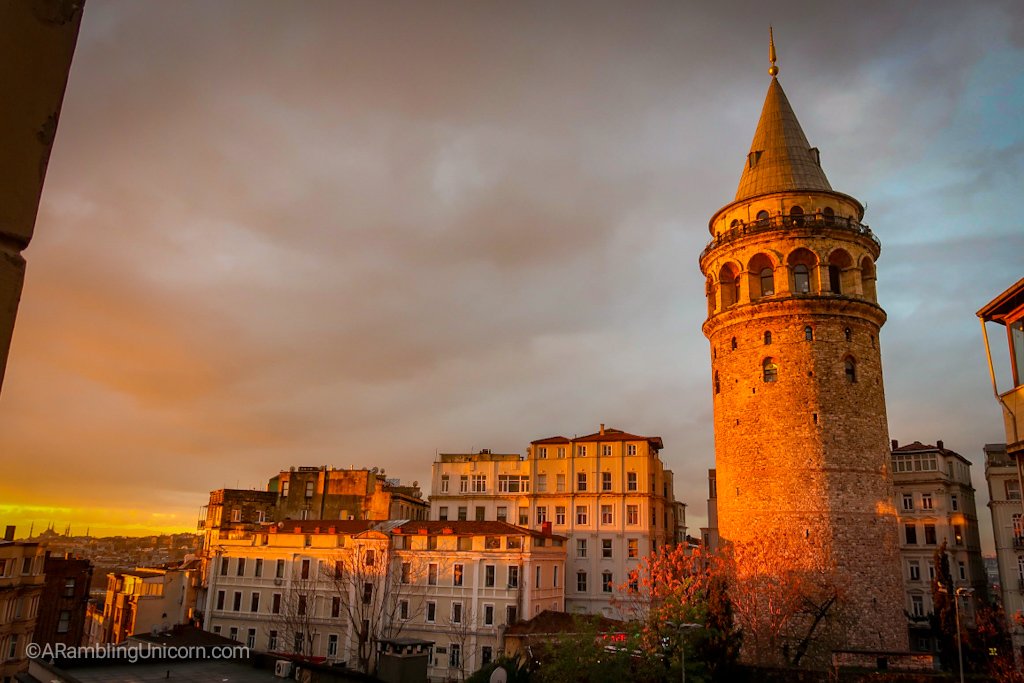
Galata Tower at sunset.
Originally constructed in 1348, the Galata Tower is 66.90 meters (219.5 feet) tall and offers panoramic views of Istanbul. Our lodging was located directly across from the Galata Tower – and we got to see it in all its glory at morning, noon and night. Although we never climbed the tower, it seemed to be a popular pastime as there was always a long line to do so.
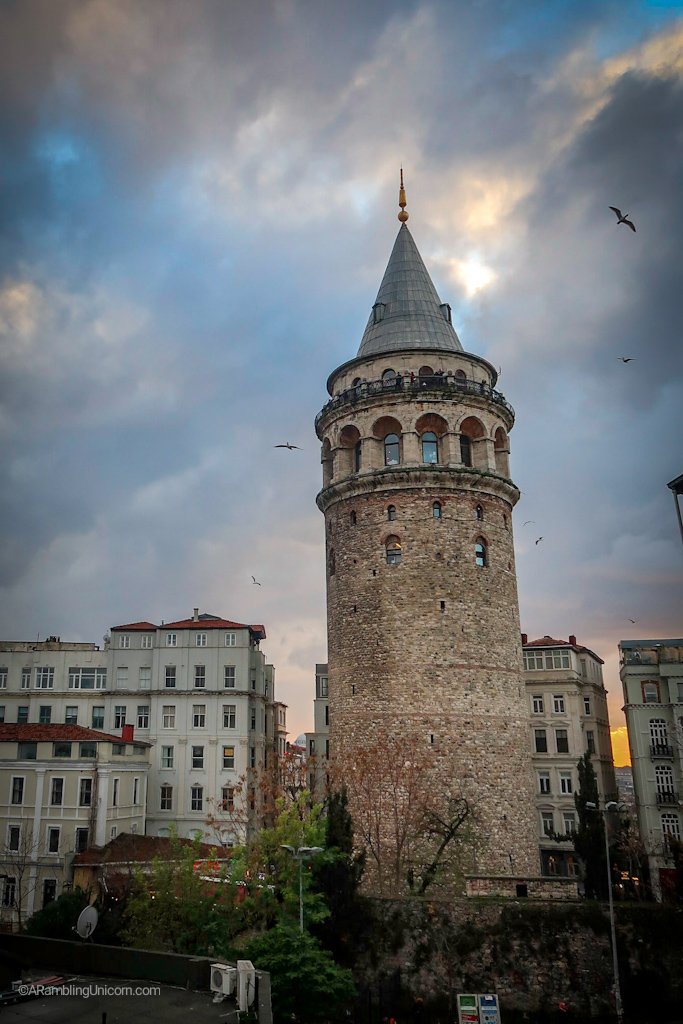
Galata Tower as viewed from our apartment.
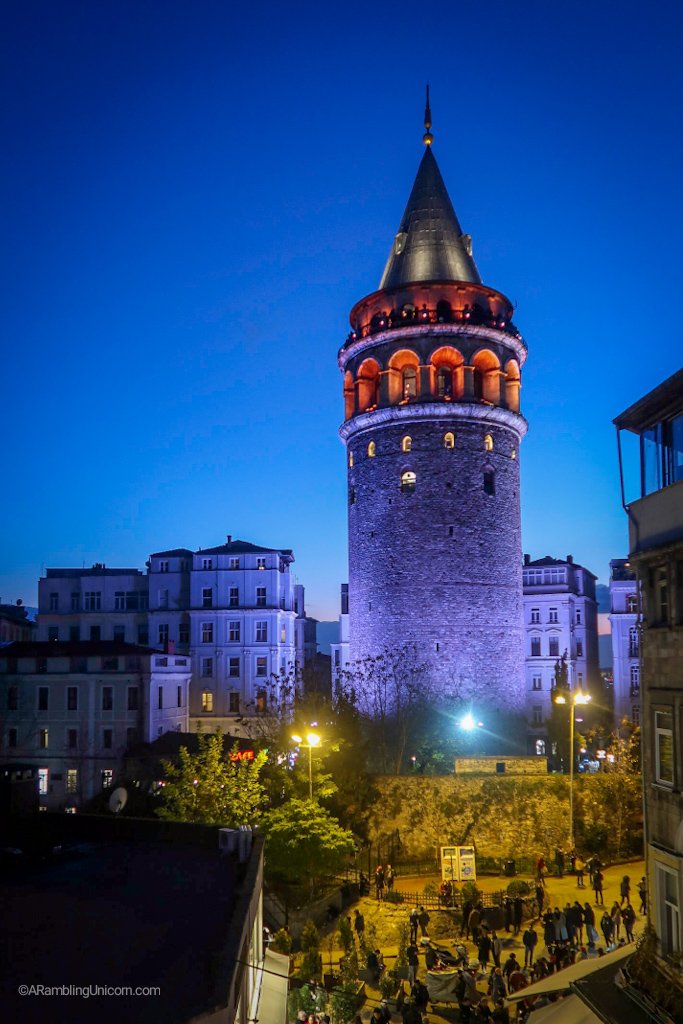
Galata Tower at night.
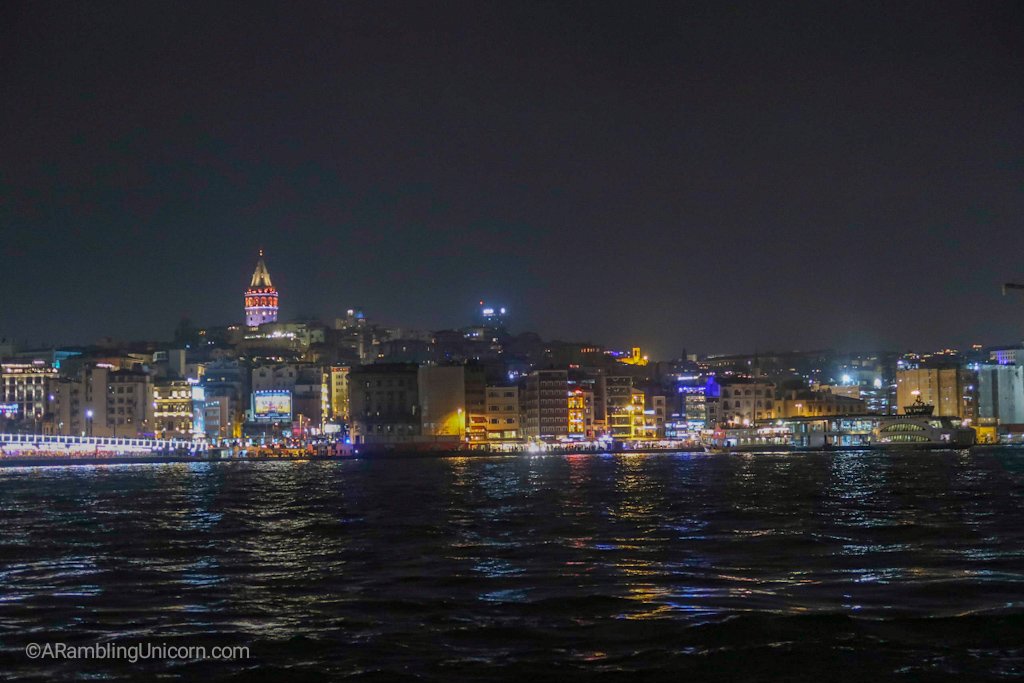
The Galata Tower as viewed from afar.
Blue Mosque
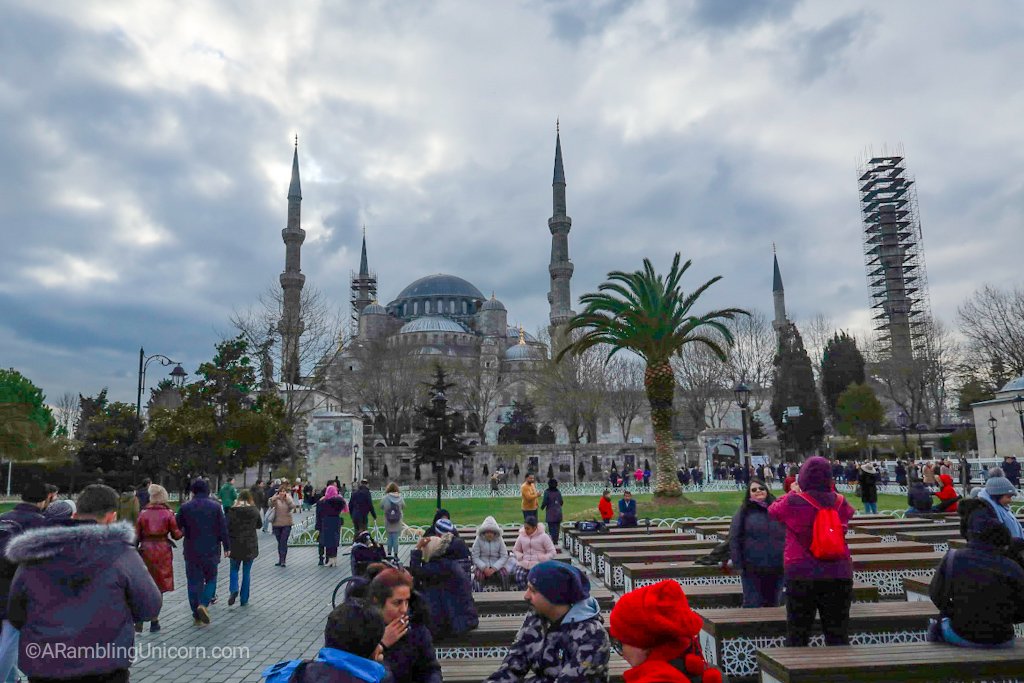
The Blue Mosque.
Adorned with hand-painted blue tiles, the Blue Mosque (Sultan Ahmed Mosque) is located next to the Hagia Sophia and attracts large crowds of visitors. This wasn’t our favorite tourist attraction because it was extremely crowded and much of the interior was not visible during our visit due to extensive renovations. If you only have time to visit one mosque when visiting Istanbul, I recommend going to the Süleymaniye Mosque instead.
As when visiting all mosques, you will need to remove your shoes prior to entering and women should cover their heads.
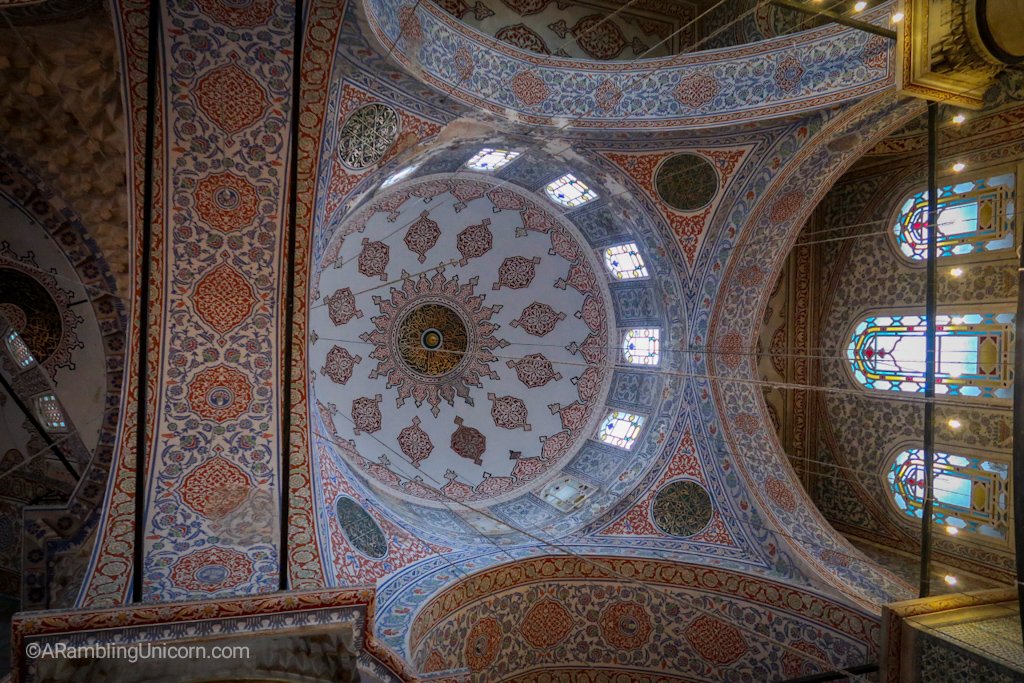
Inside the Blue Mosque.
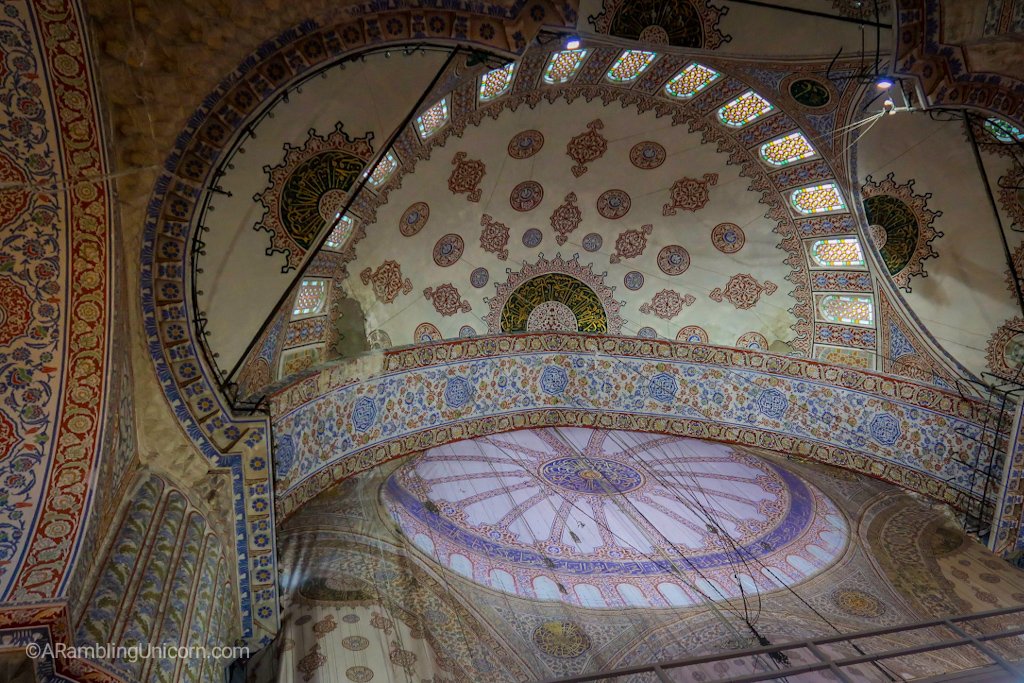
Inside the Blue Mosque.
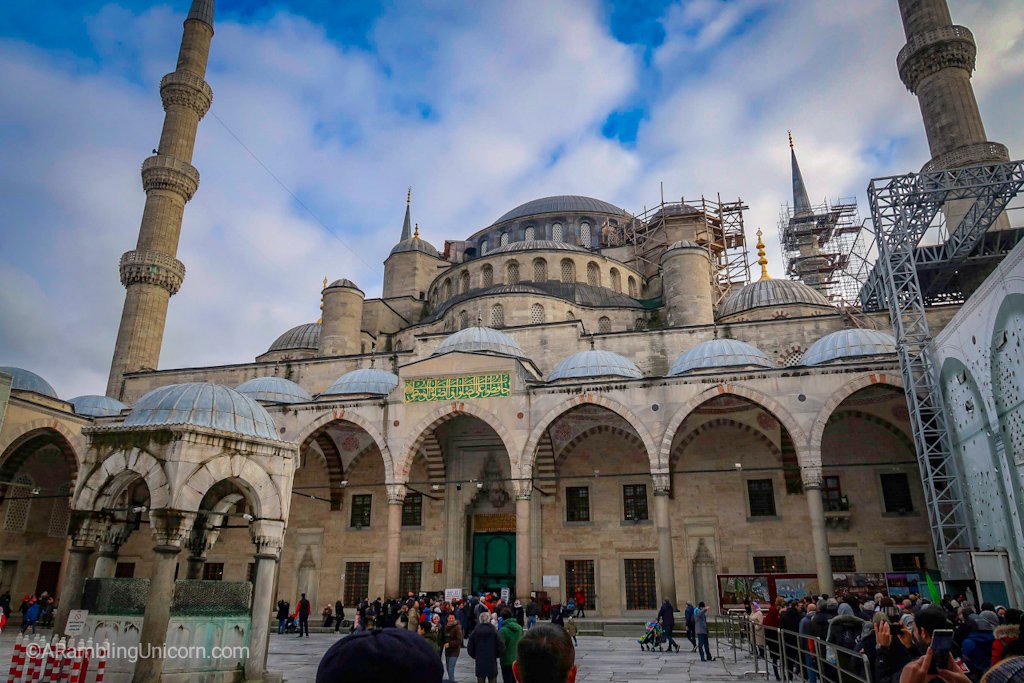
The Blue Mosque.
Where are we now?
Location: Istanbul, Turkey
Date: Wednesday, January 1 to Wednesday, January 8, 2020
Vagabonding Journey Status: Days 93-100
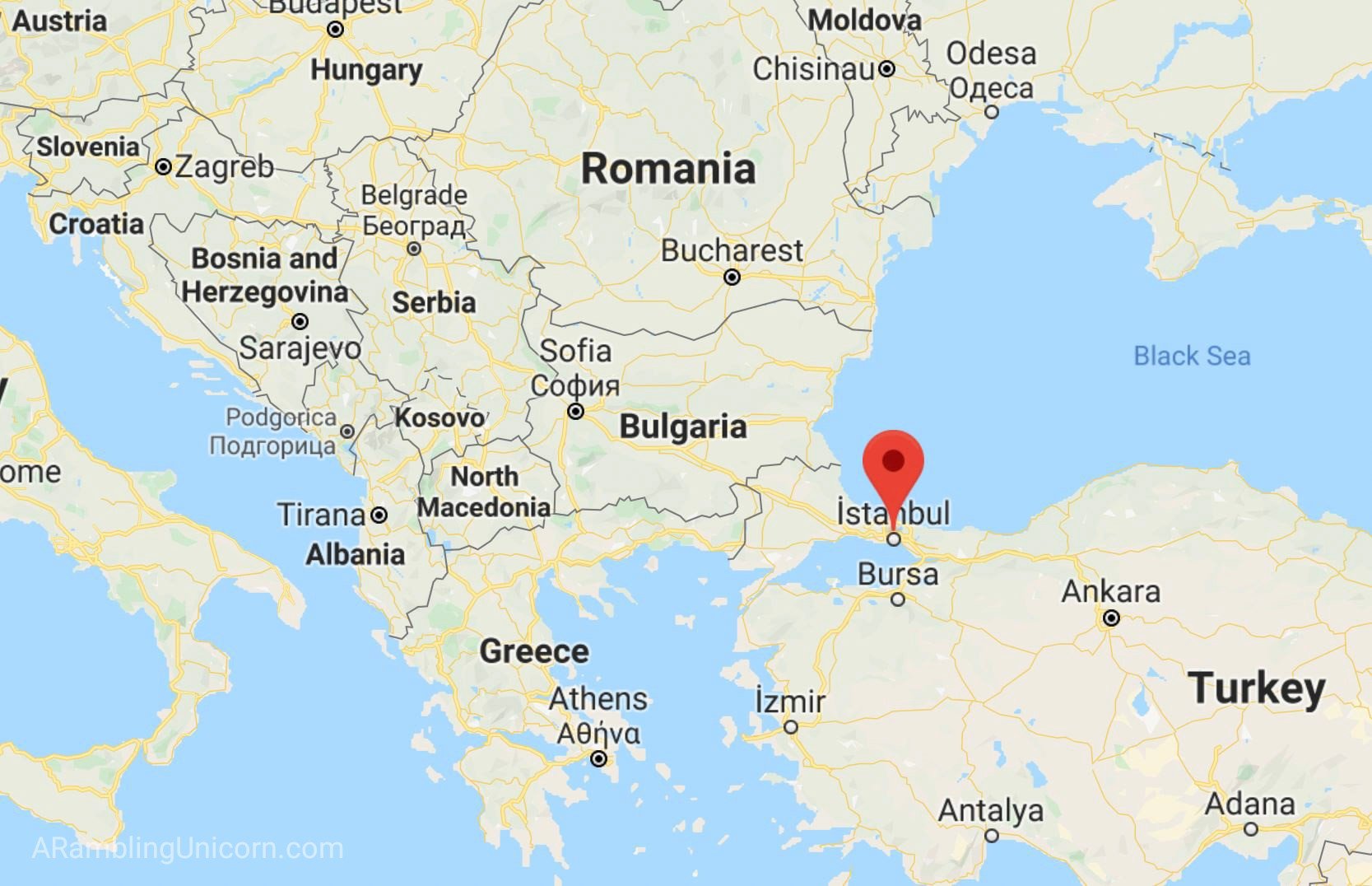
For more details on our vagabonding journey, see my previous posts:
- Day 92:Â New Year’s Eve in Istanbul: Street Food and Birthday Pub Crawl Shenanigans
- Day 89:Â Things to do in Transylvania: A Tour of Romania’s Castles
- Day 84:Â Christmas Abroad in Bucharest, the Little Paris of the East
- Day 79:Â A Tour of Sofia’s Weihnachtsmarkt (German Christmas Market)
- Day 78:Â The Historic Orient Express Route: Belgrade to Sofia to Bucharest
Like this post? Pin It!
Click on the image below to save it to your board on Pinterest.

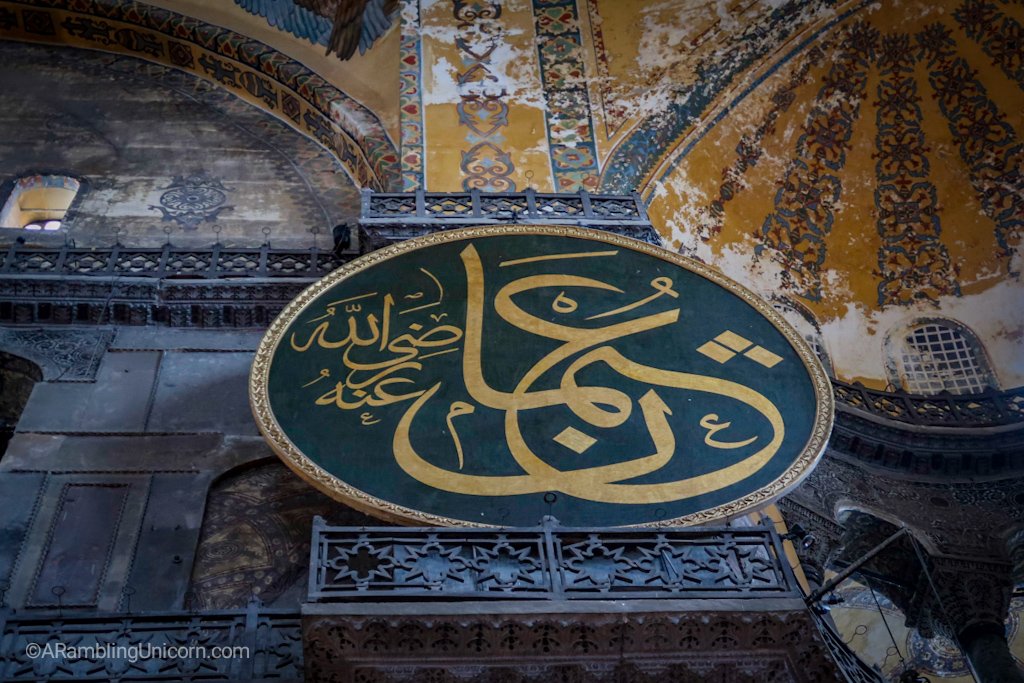

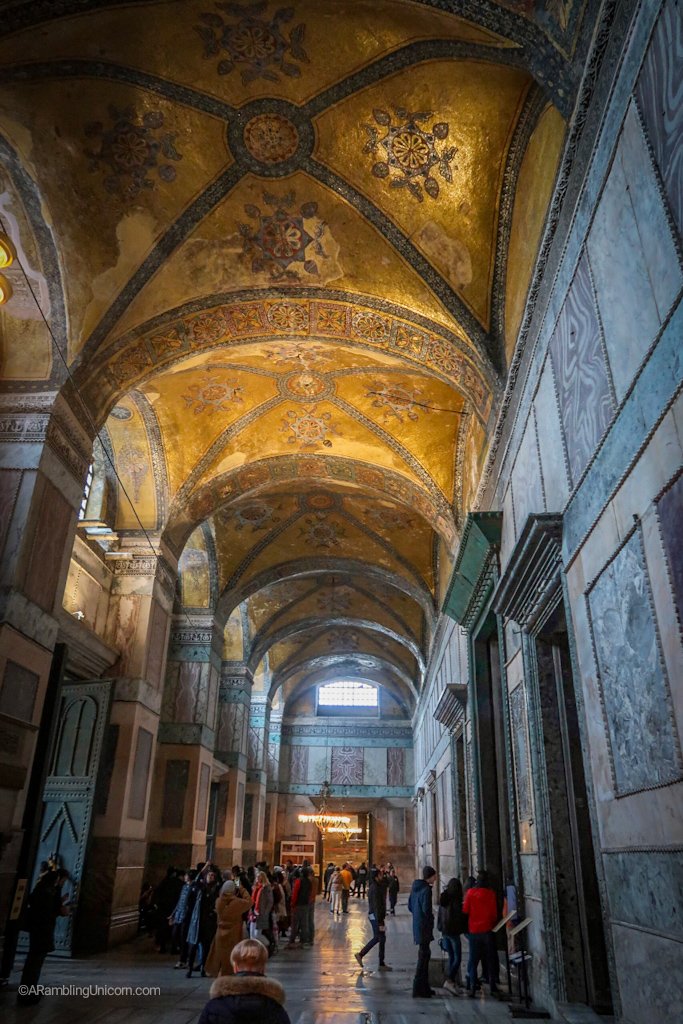
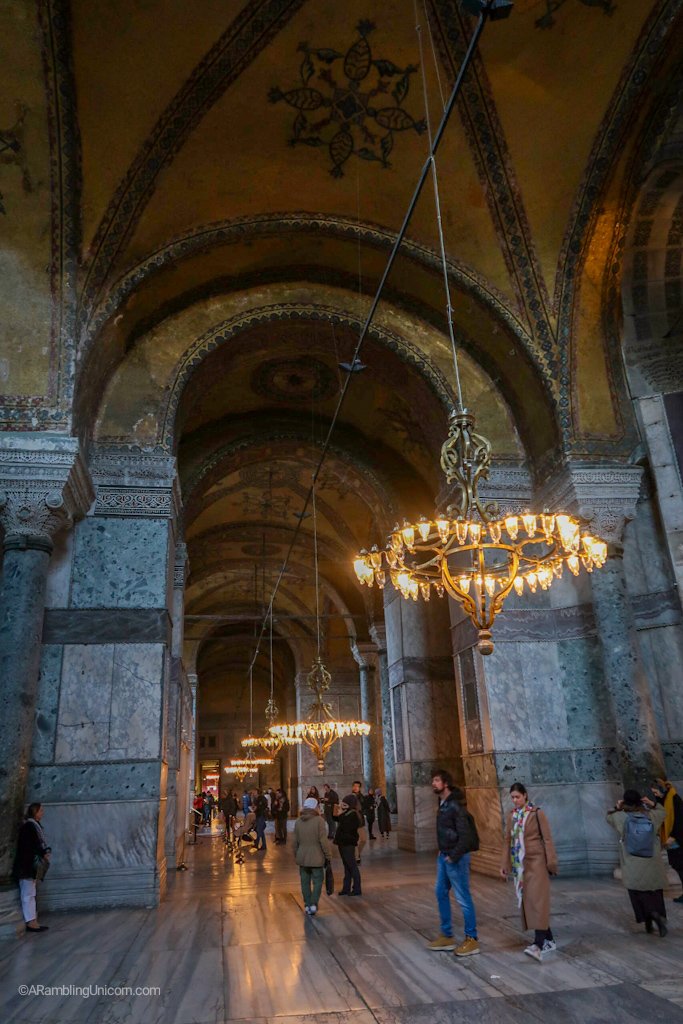
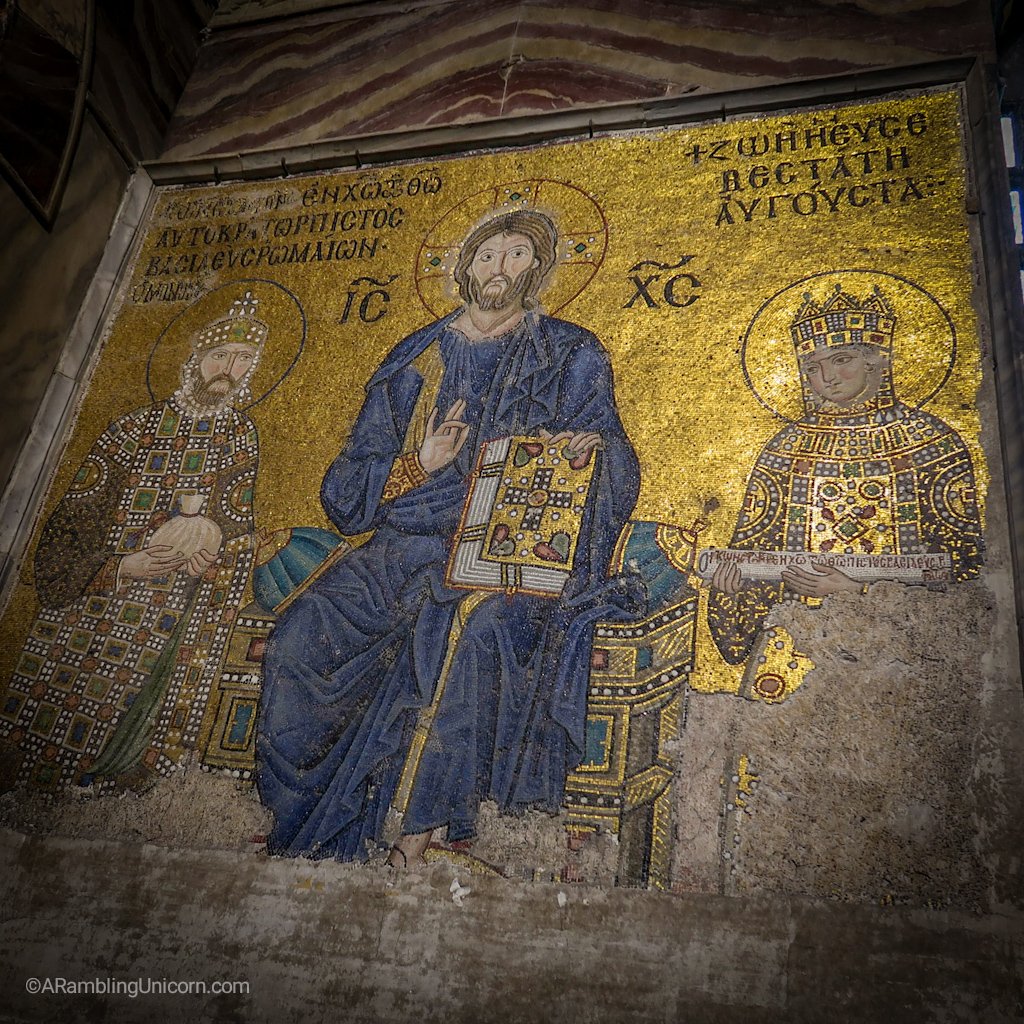

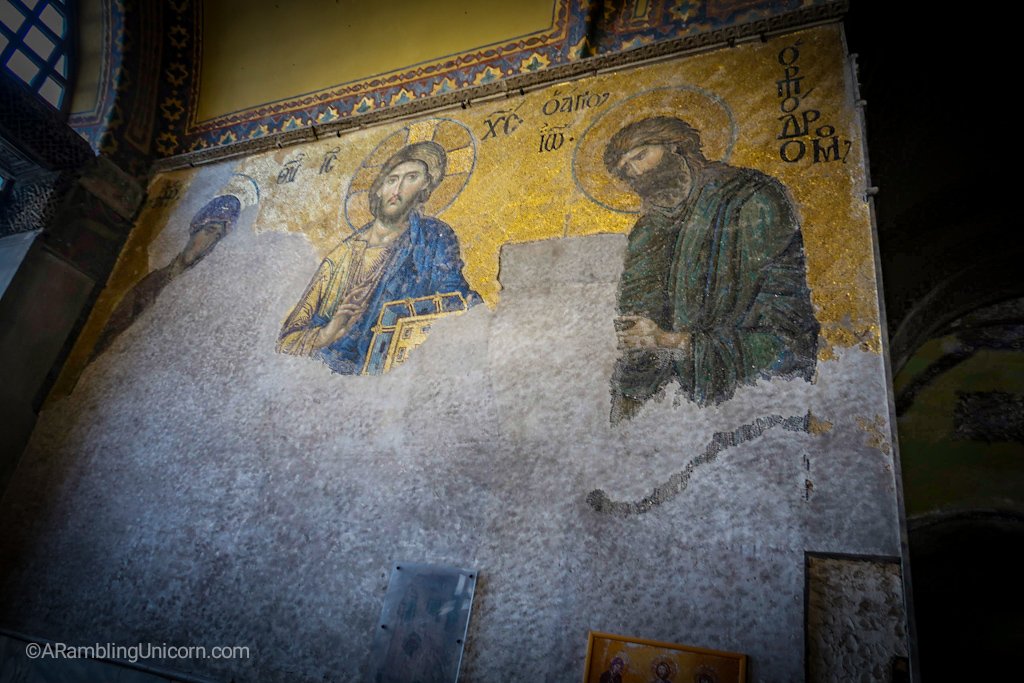

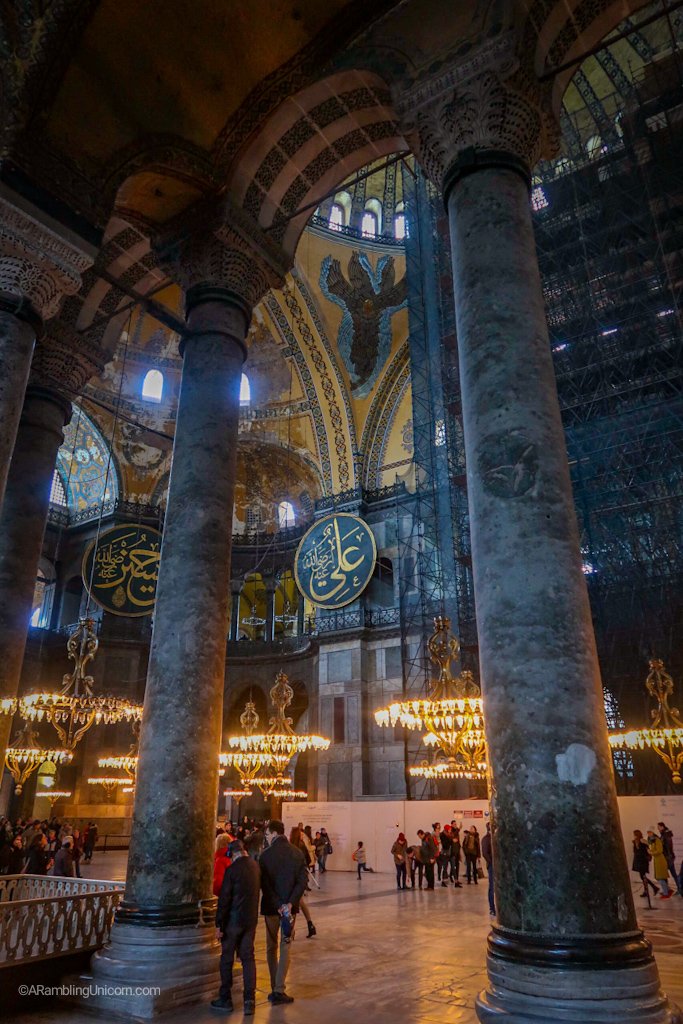
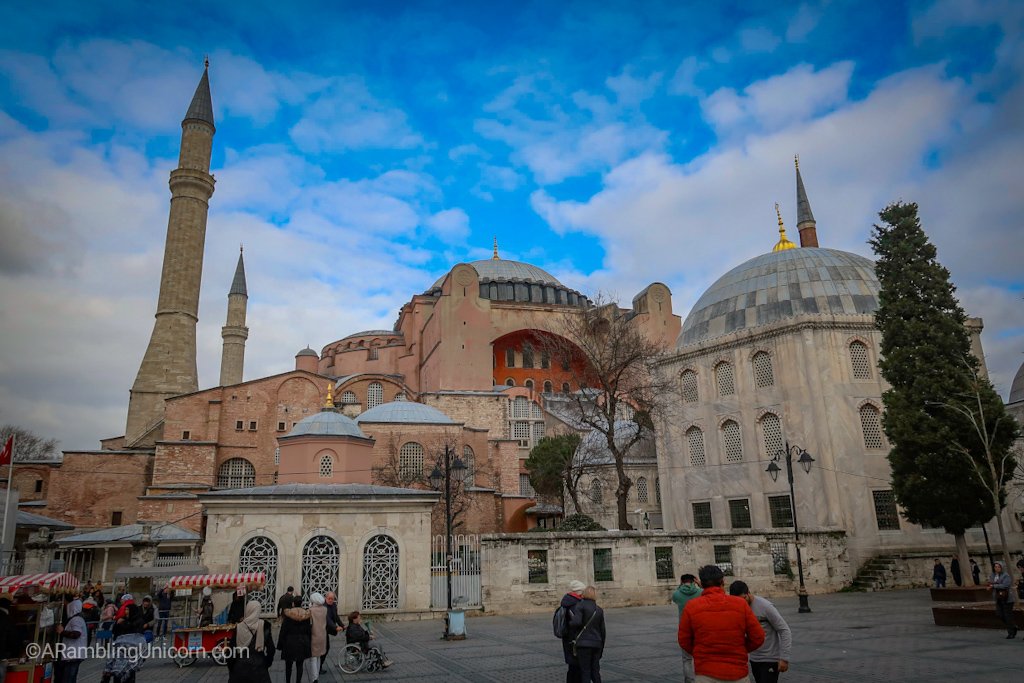

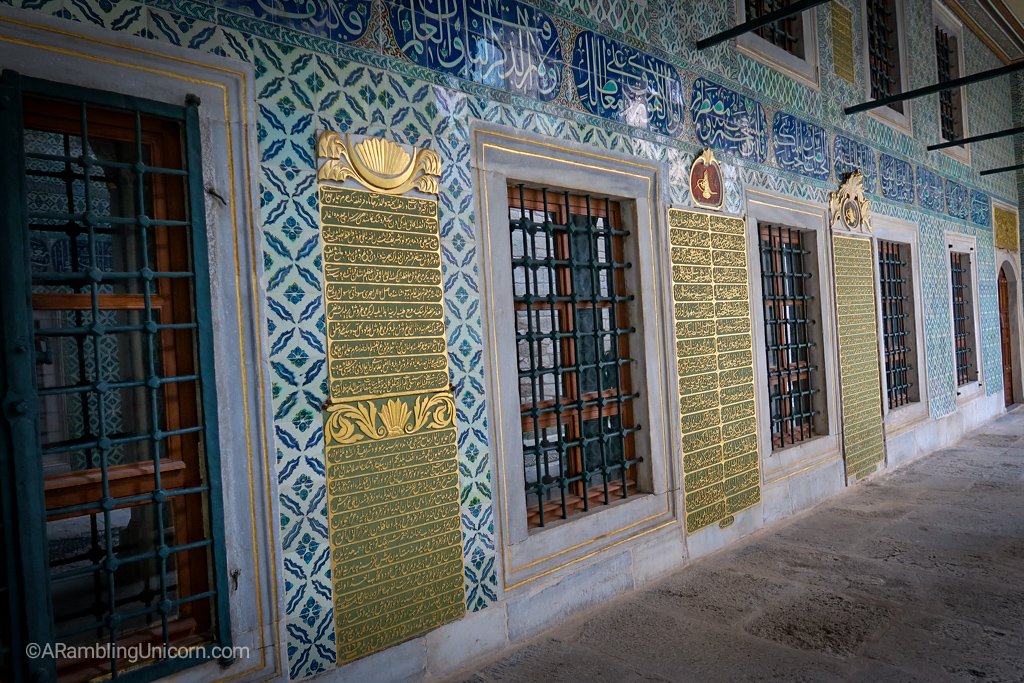
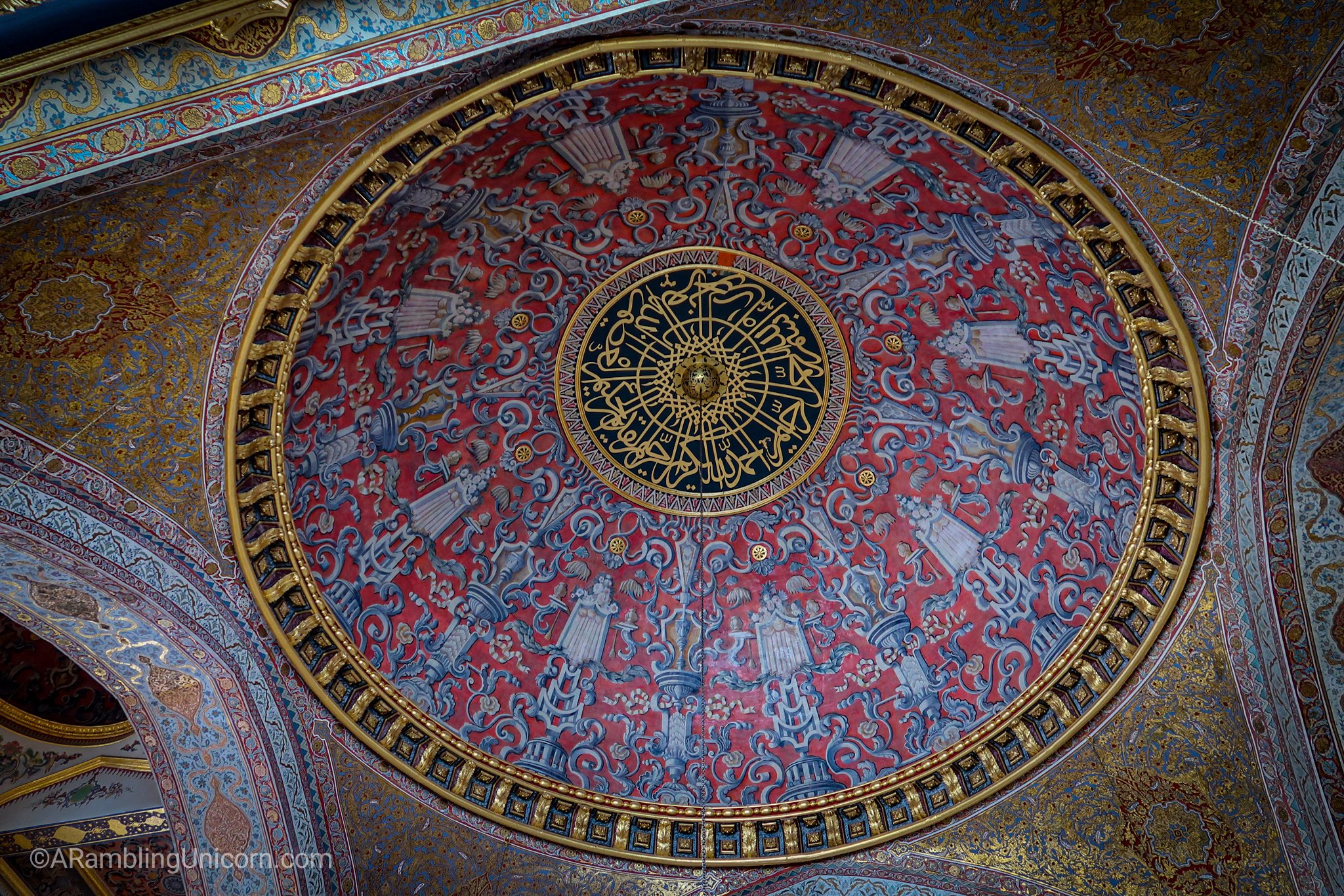
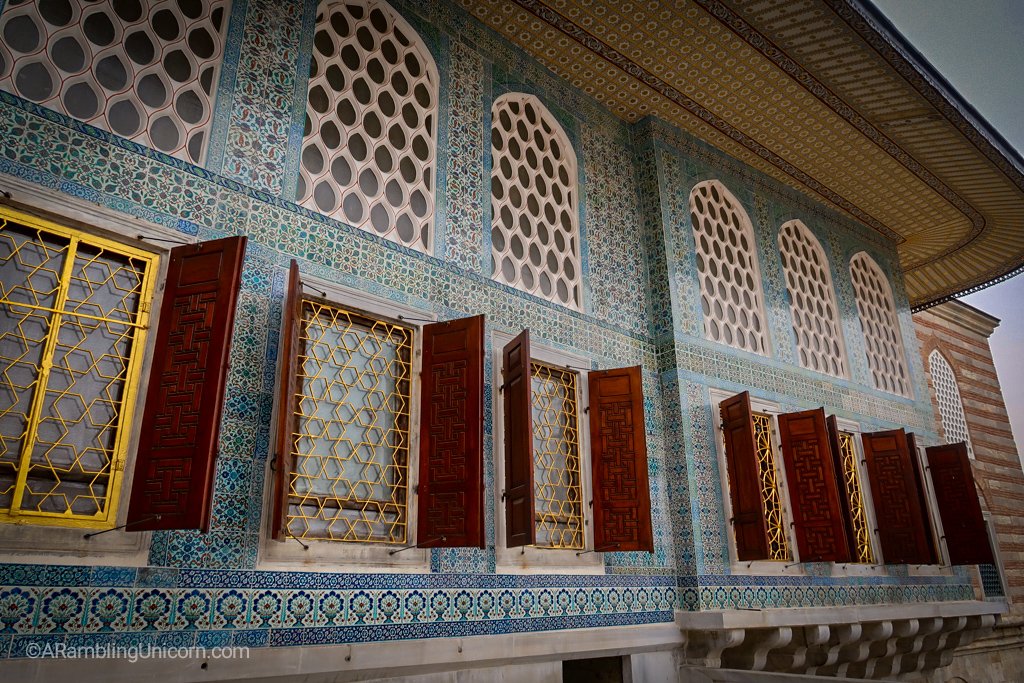
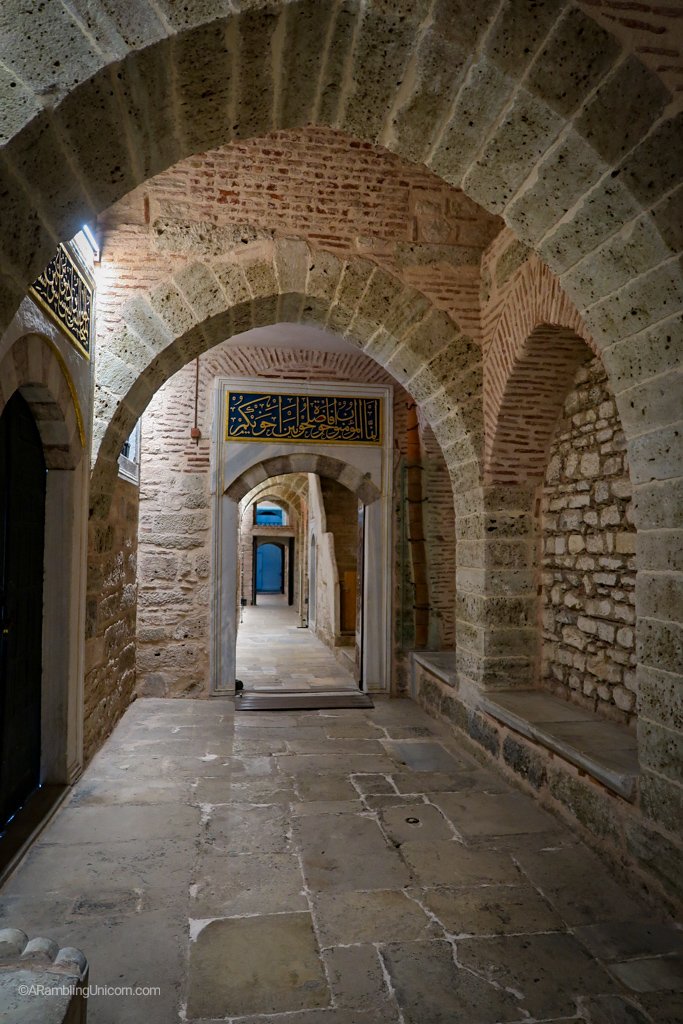
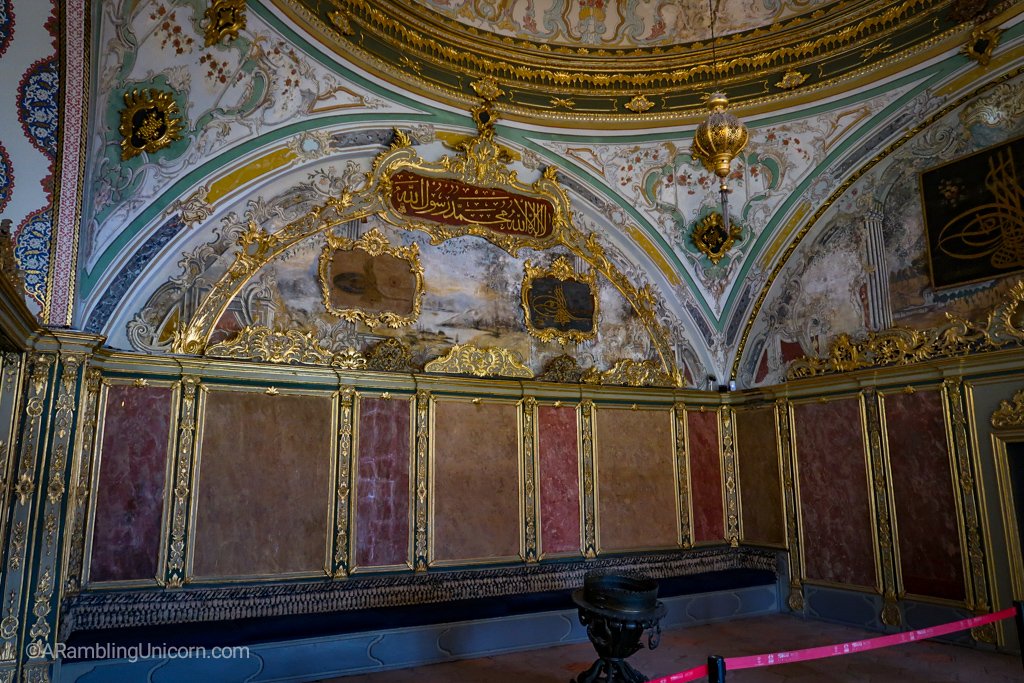

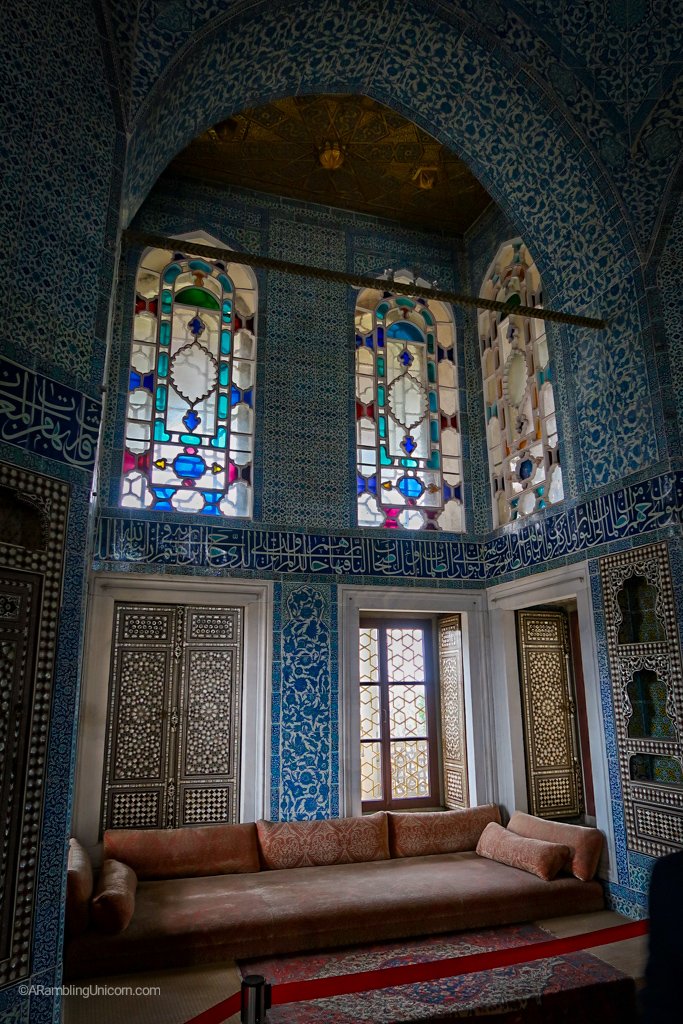
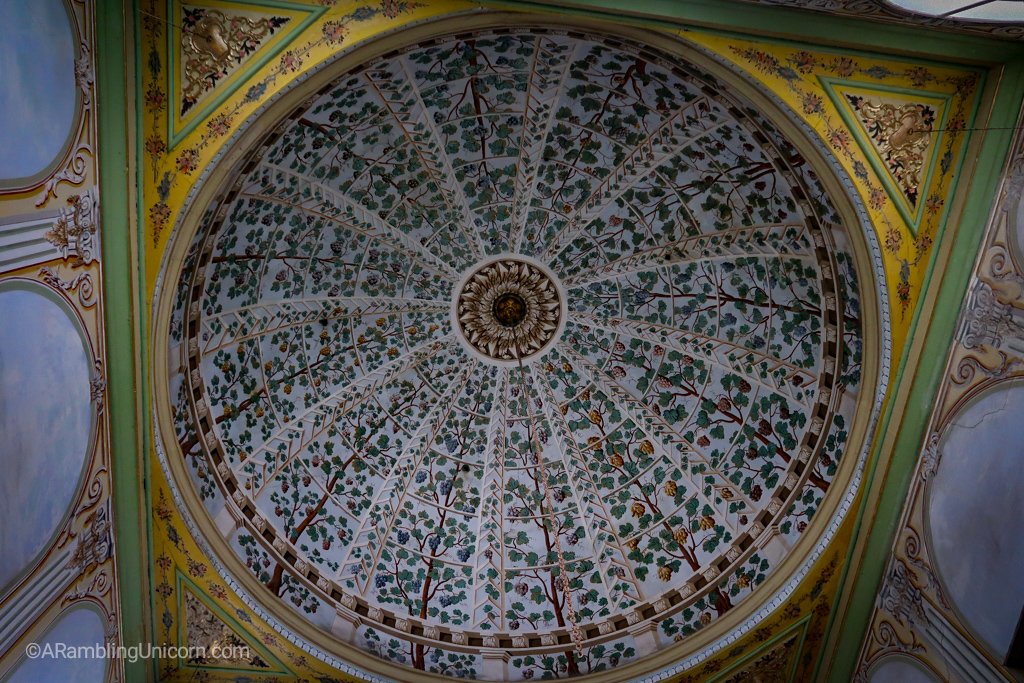
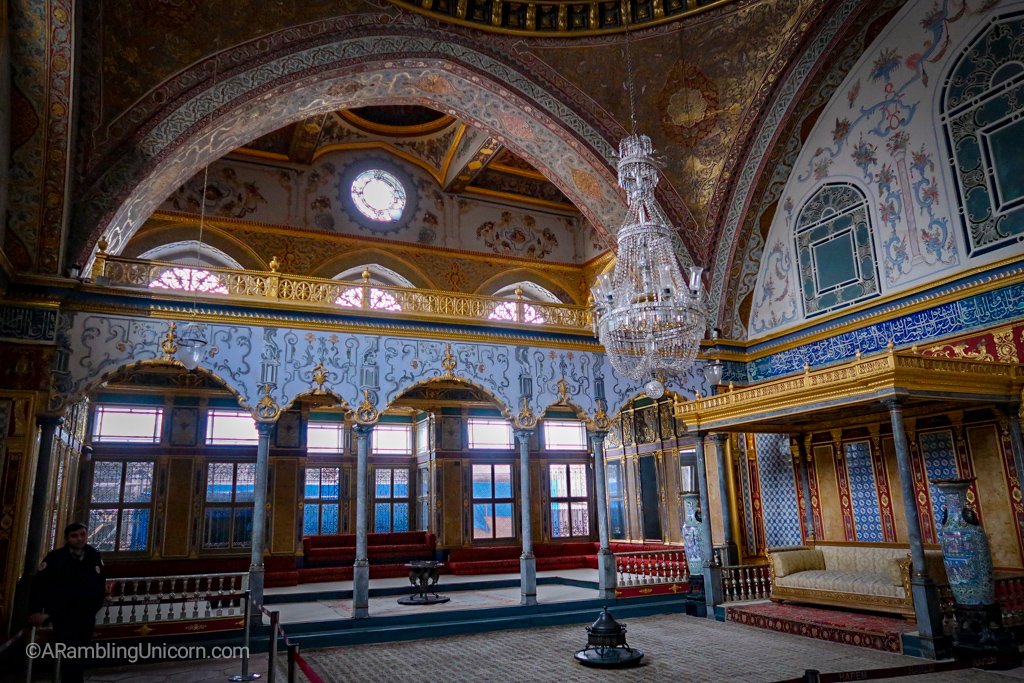
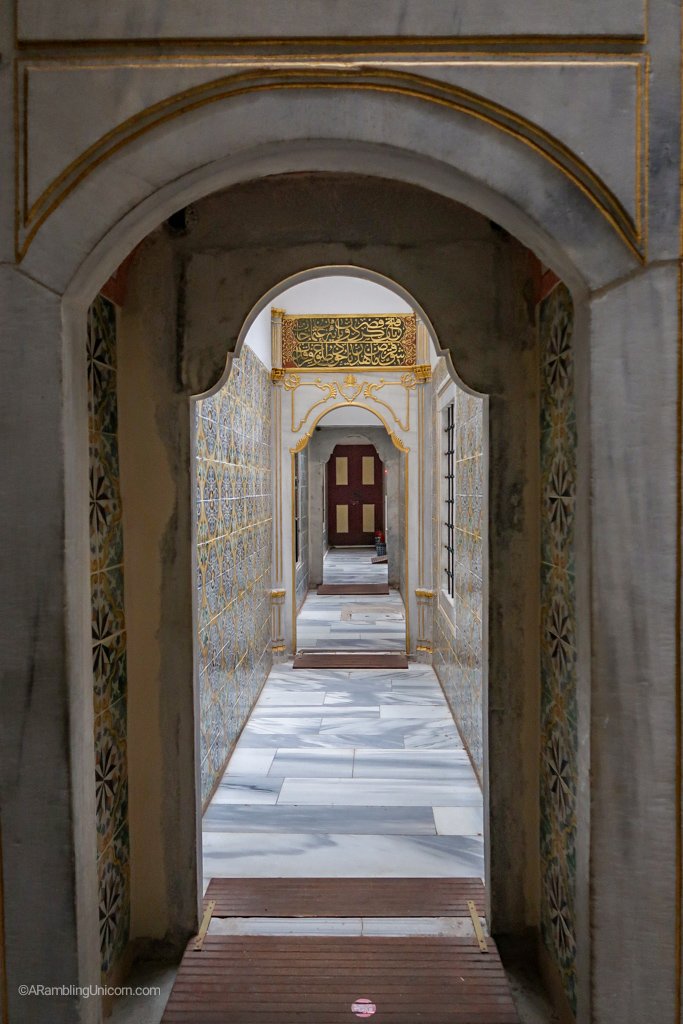
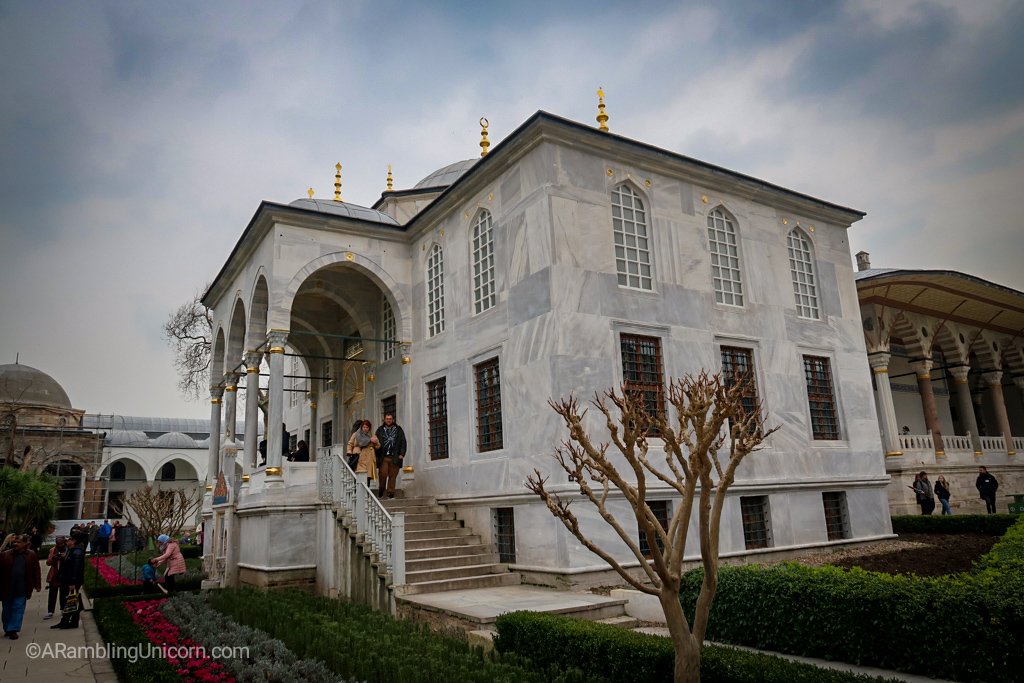
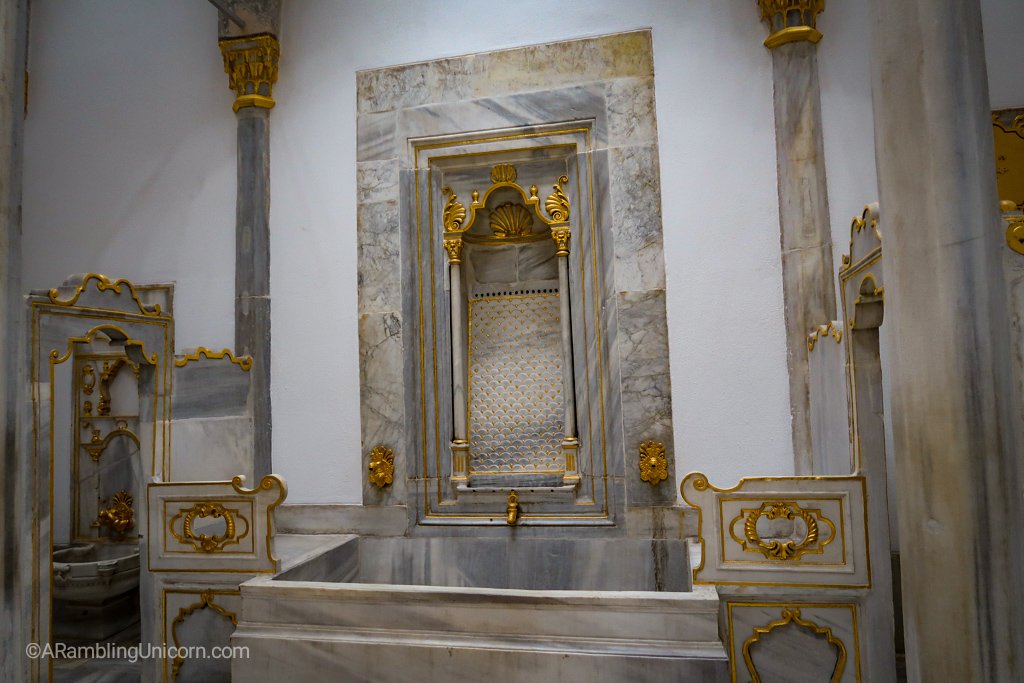

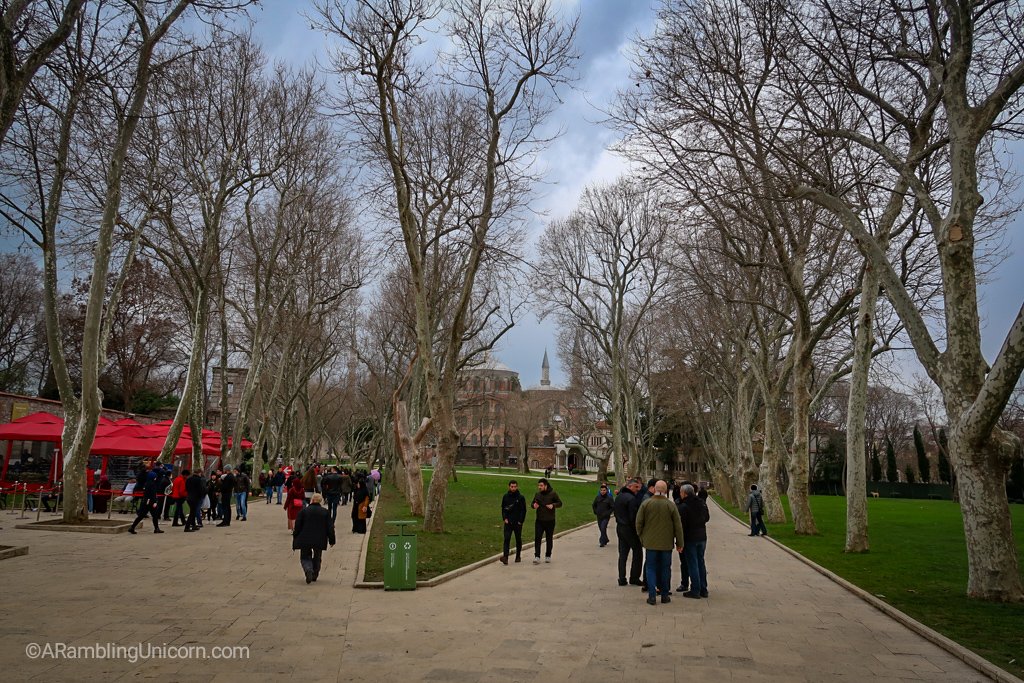
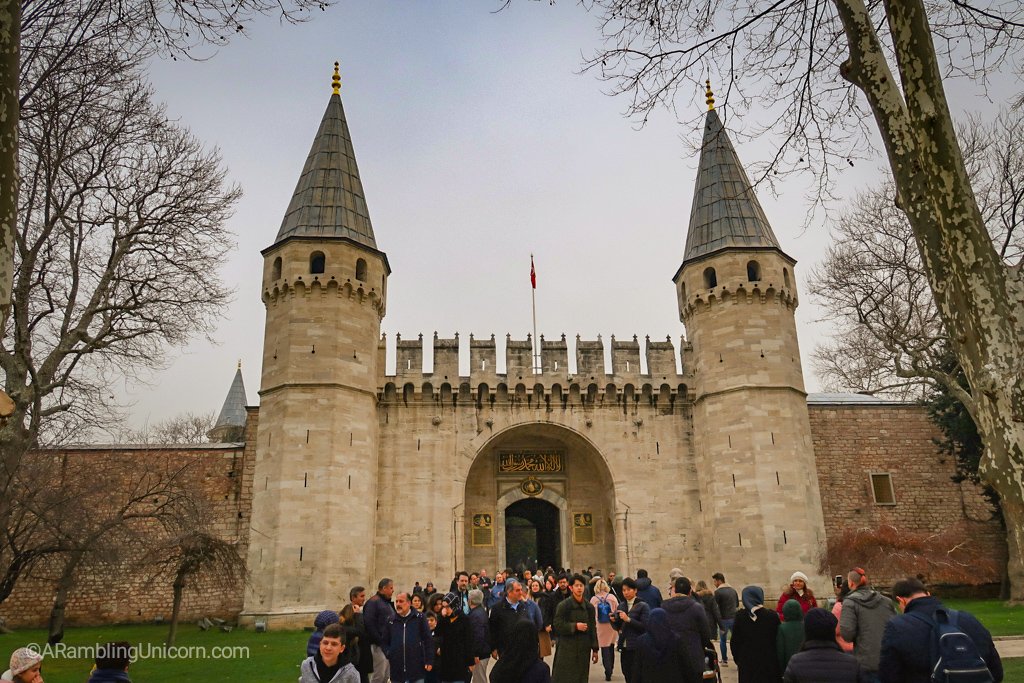
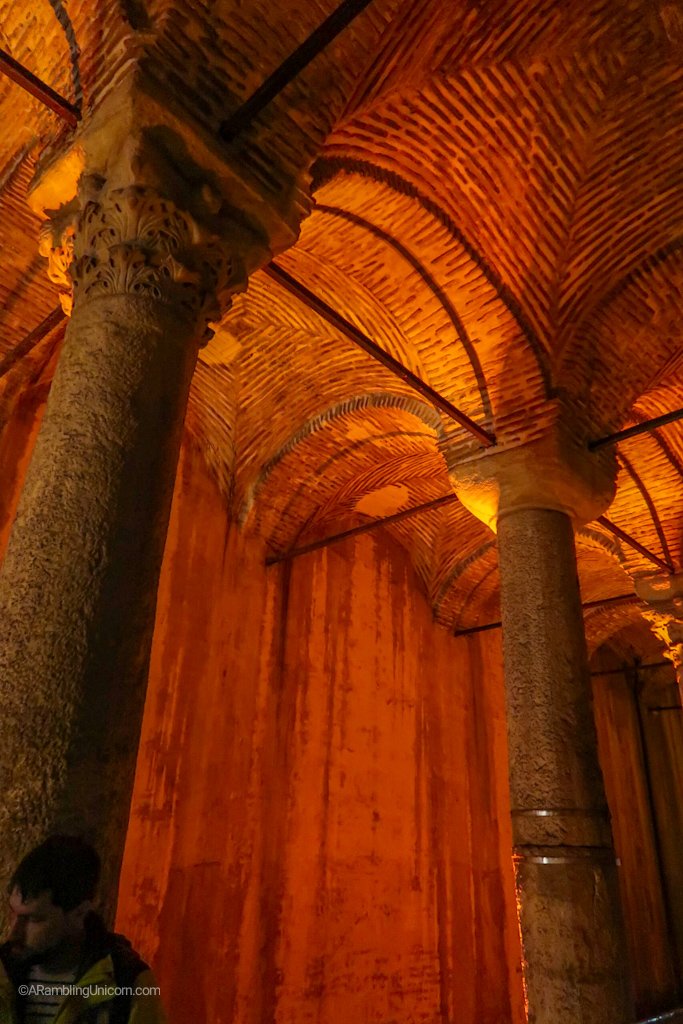
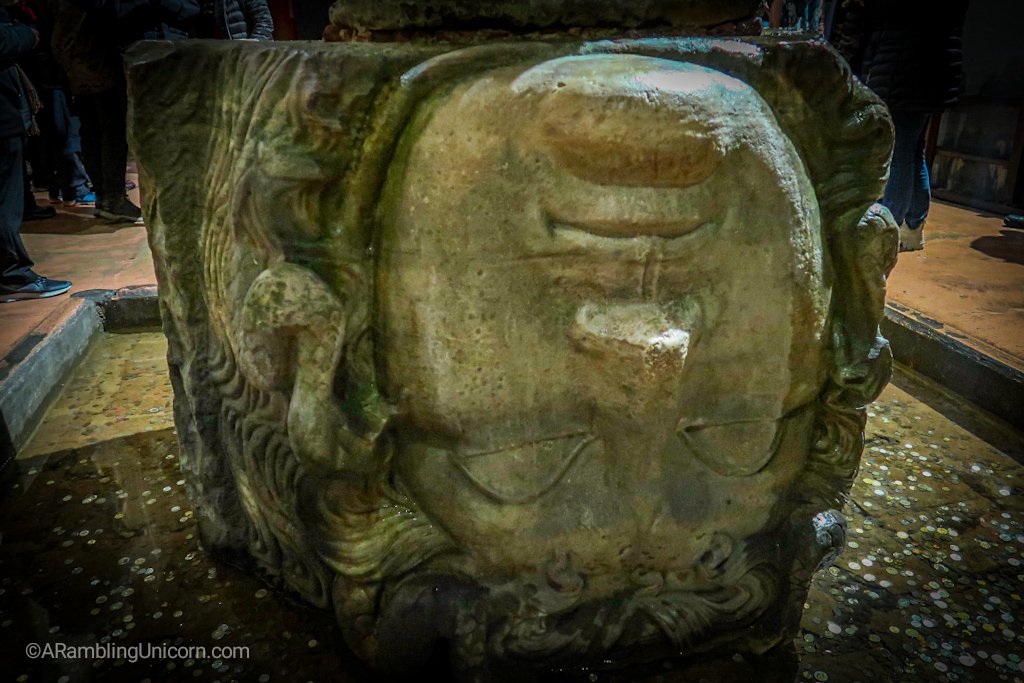

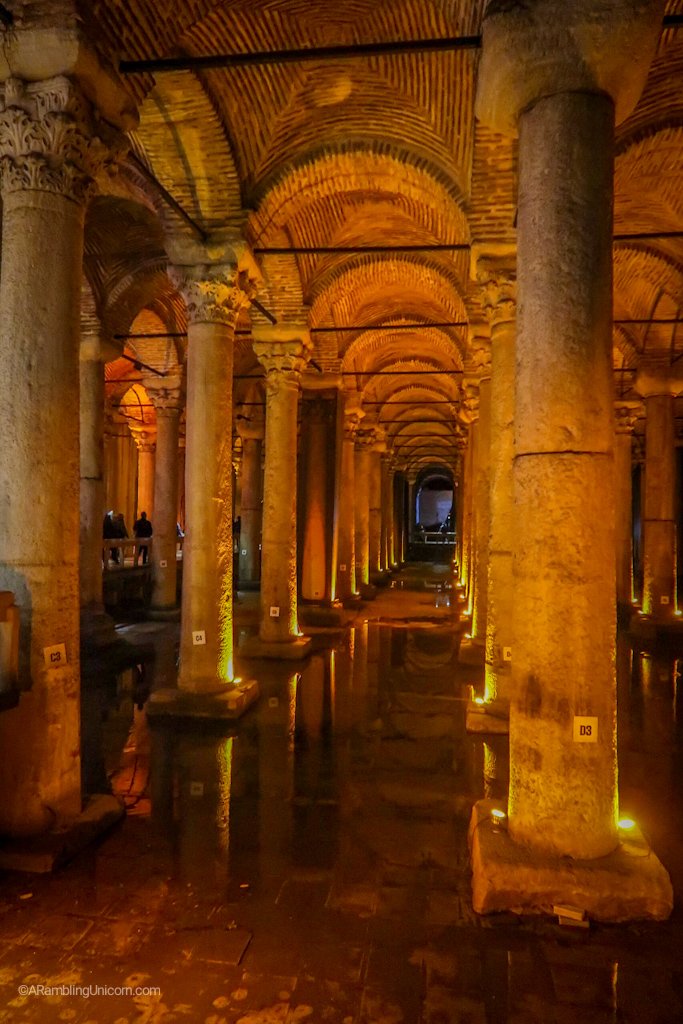

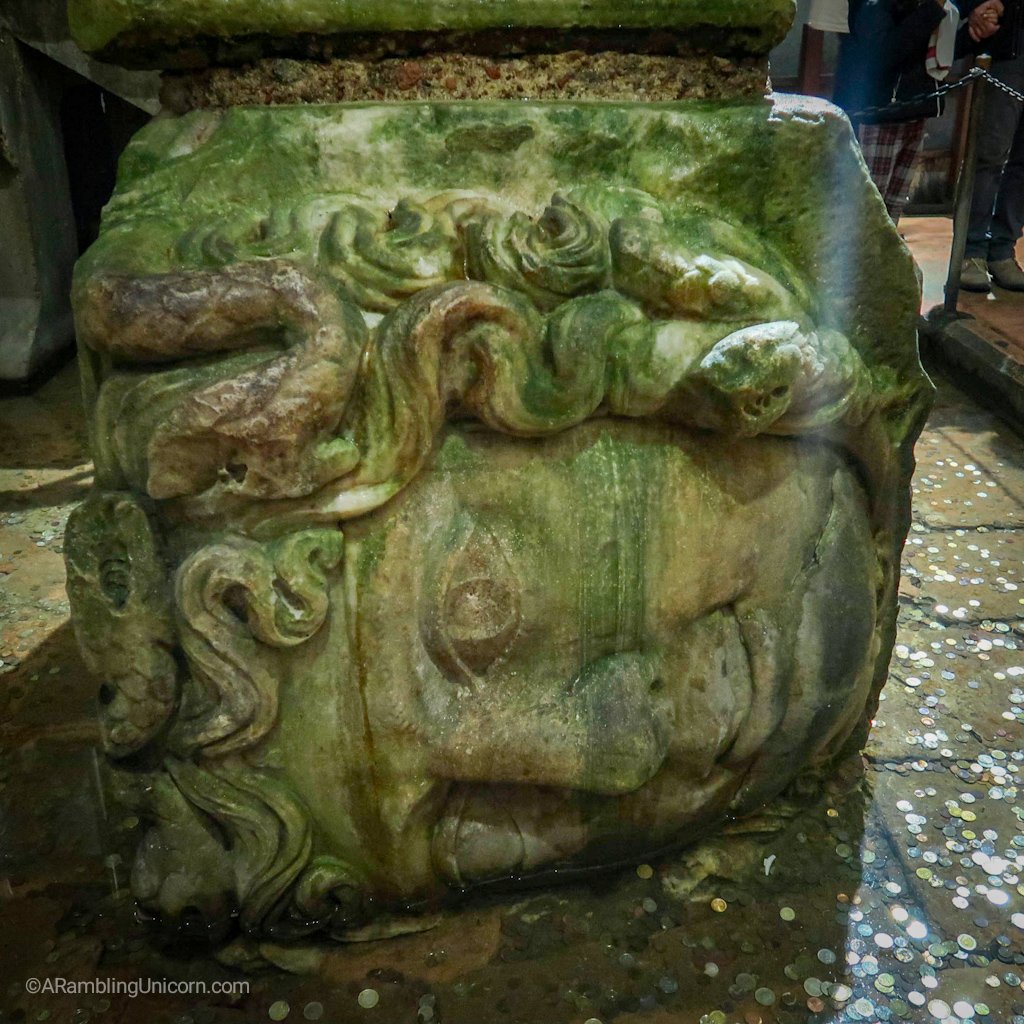
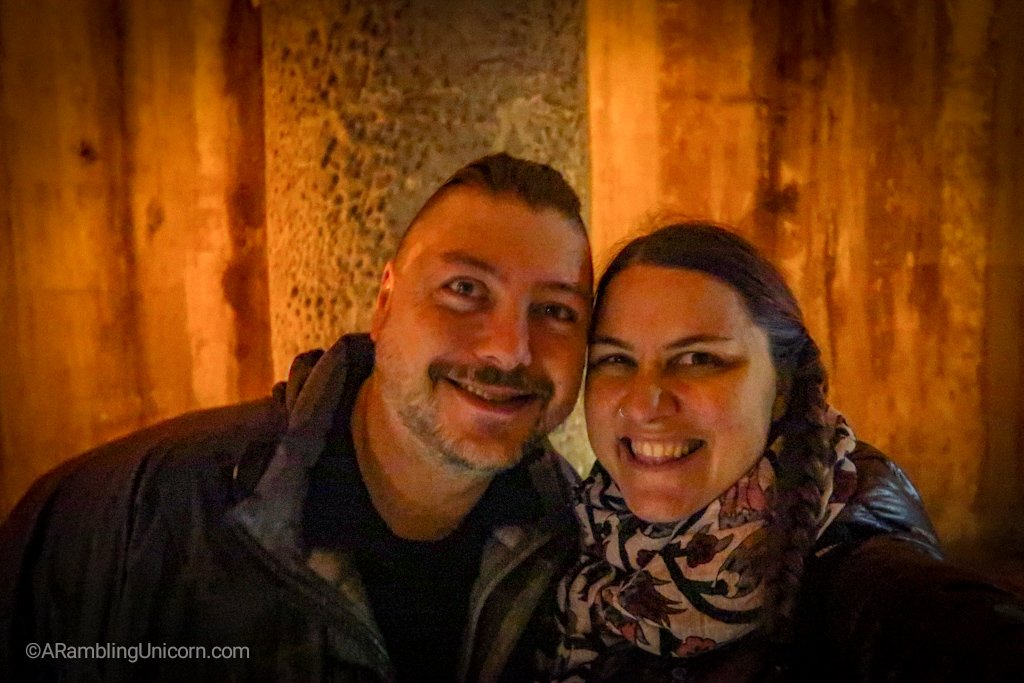

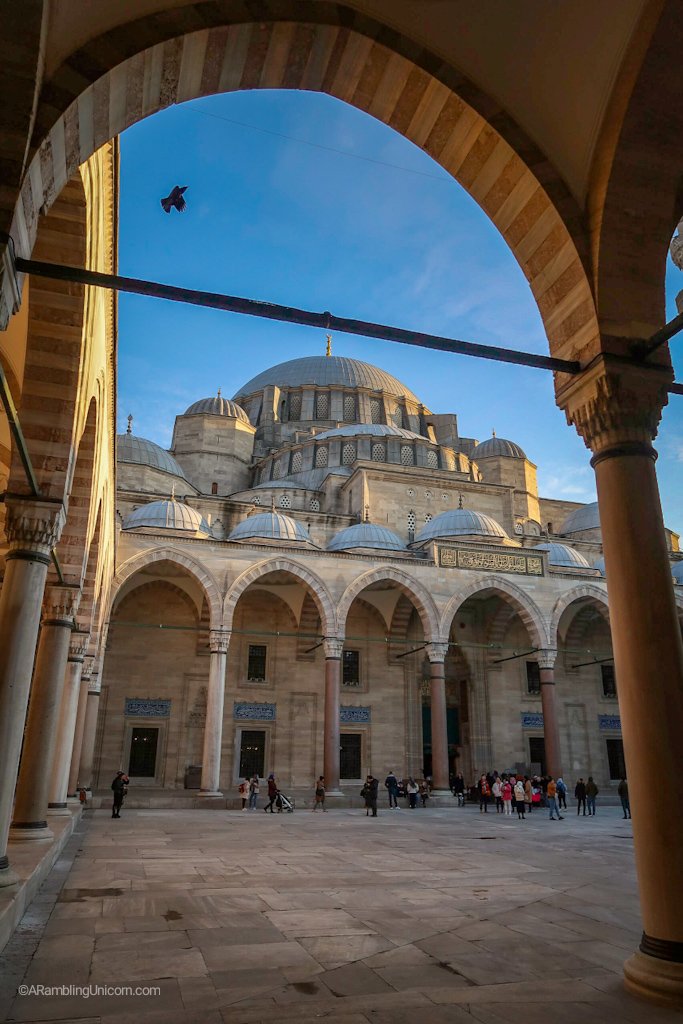

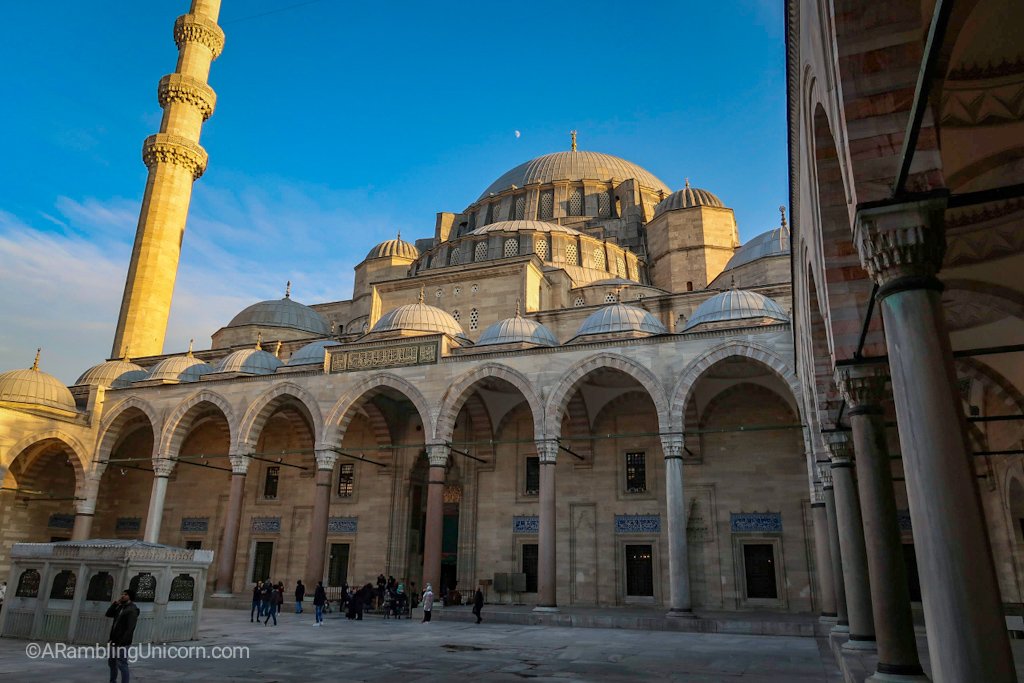
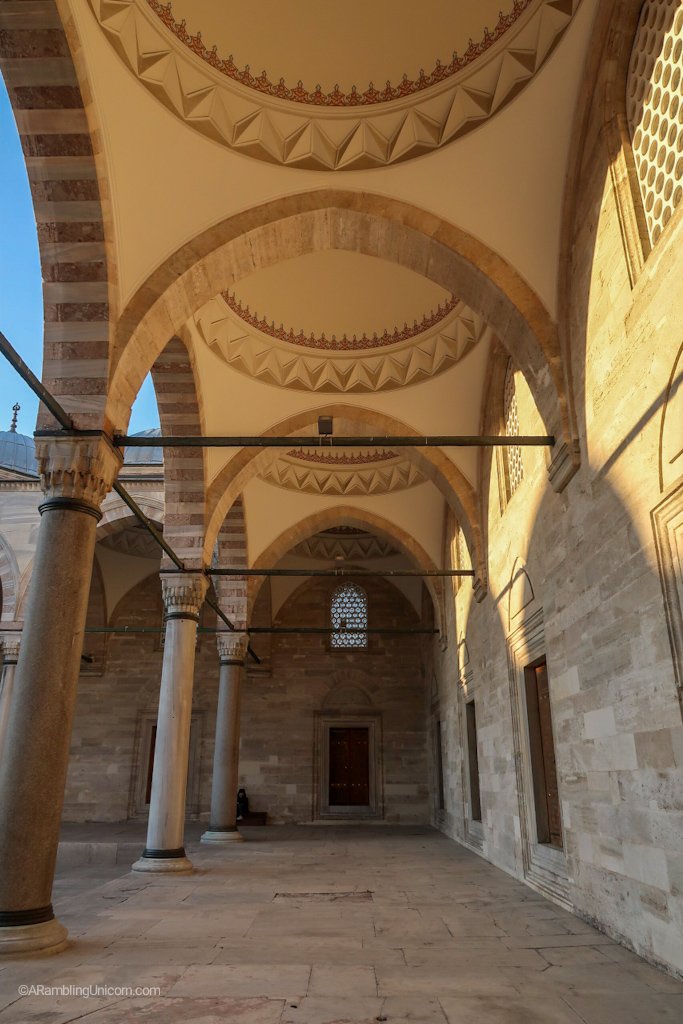
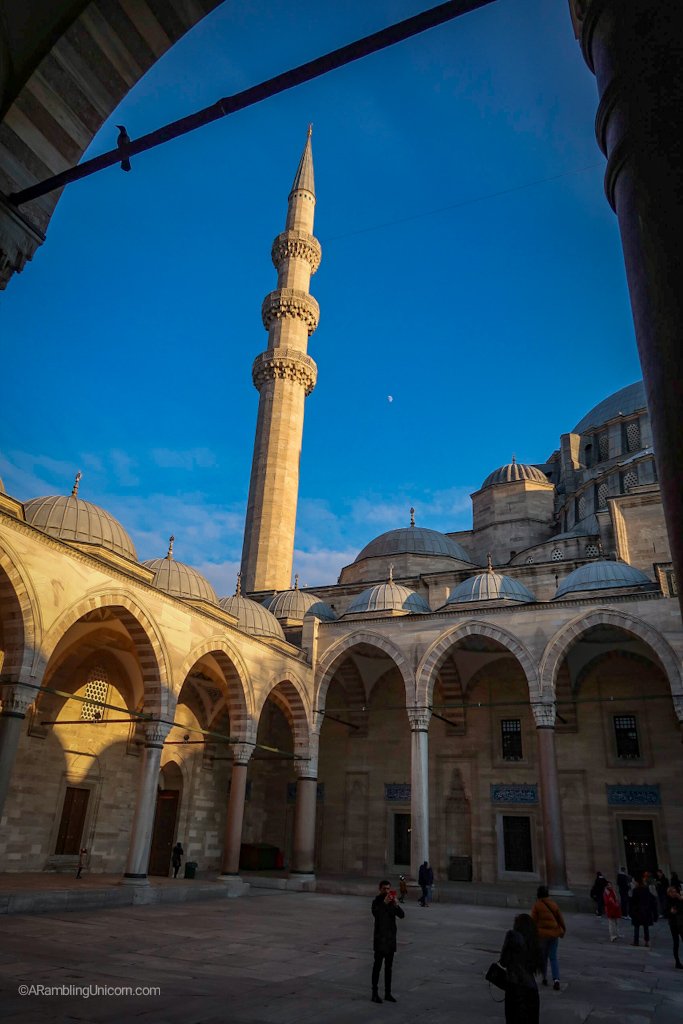
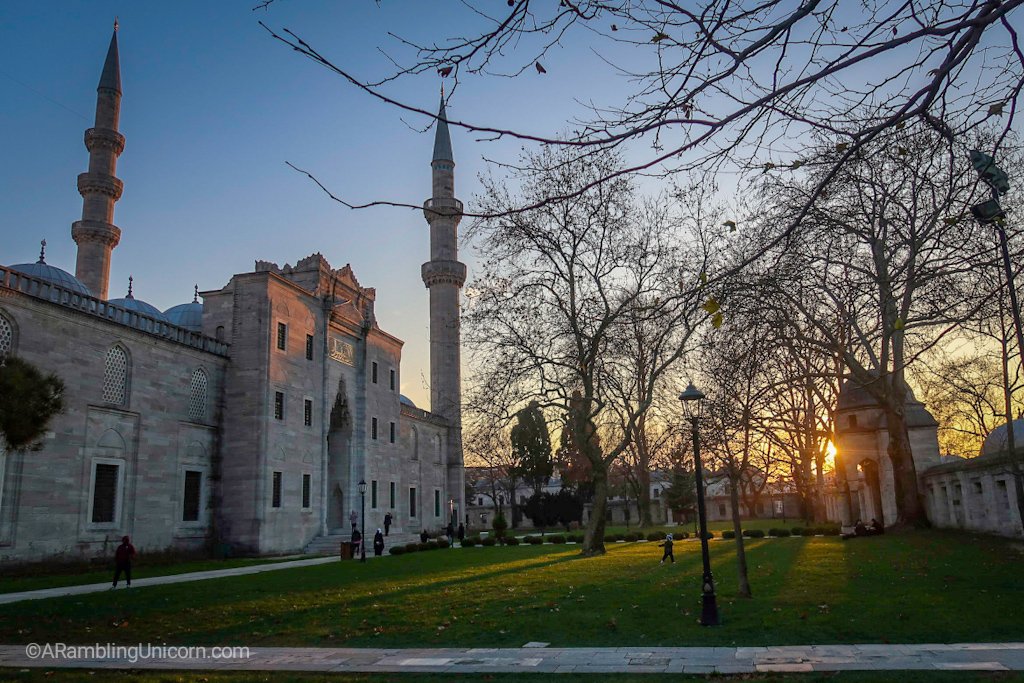
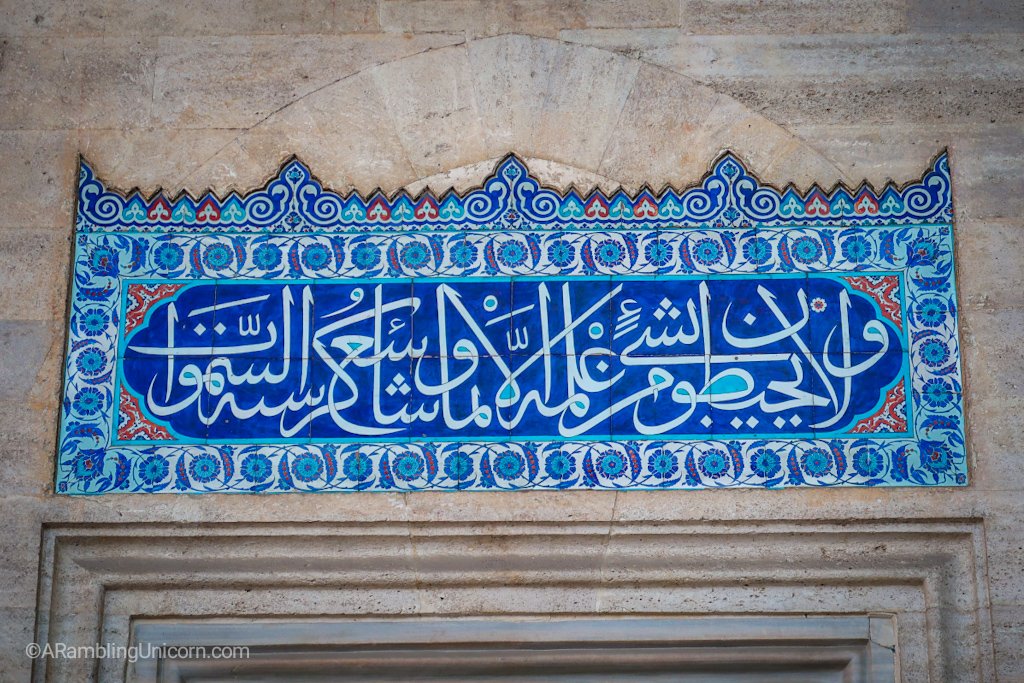
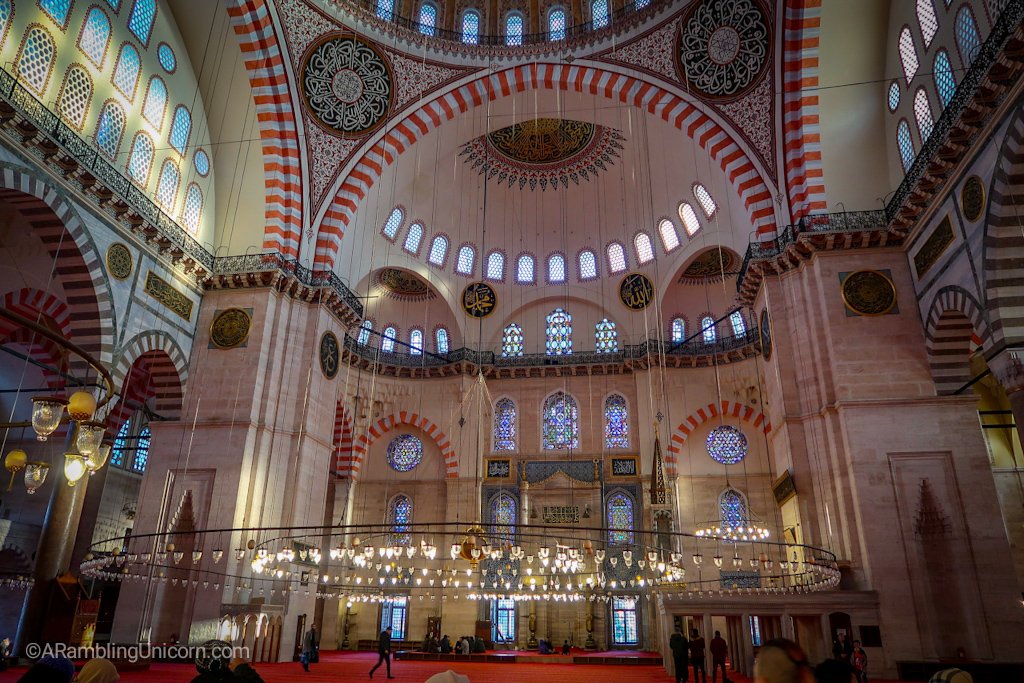

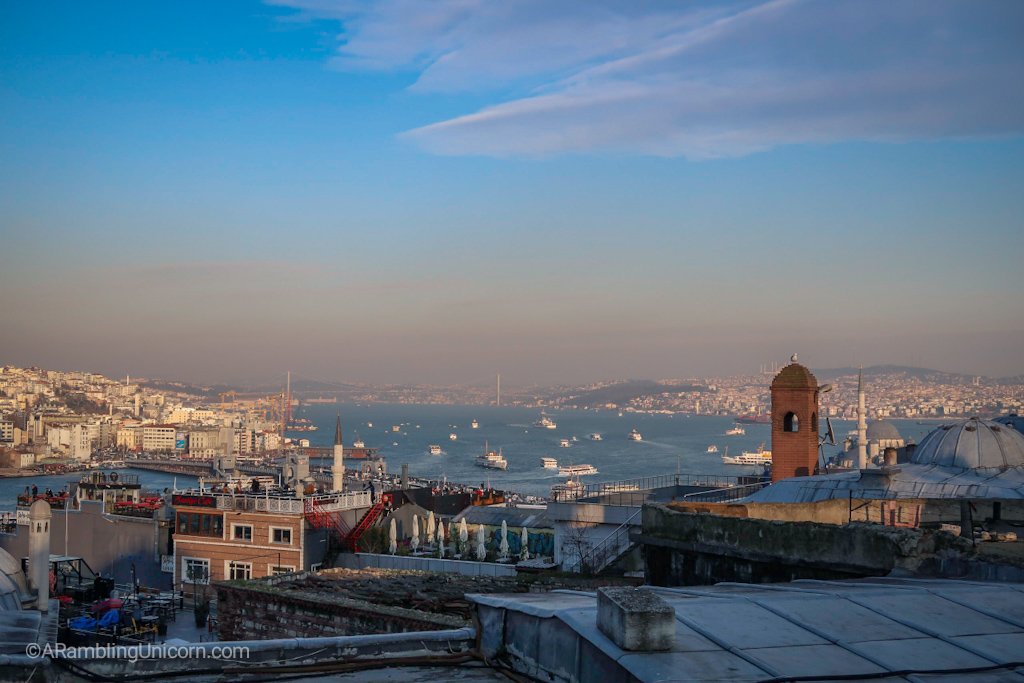
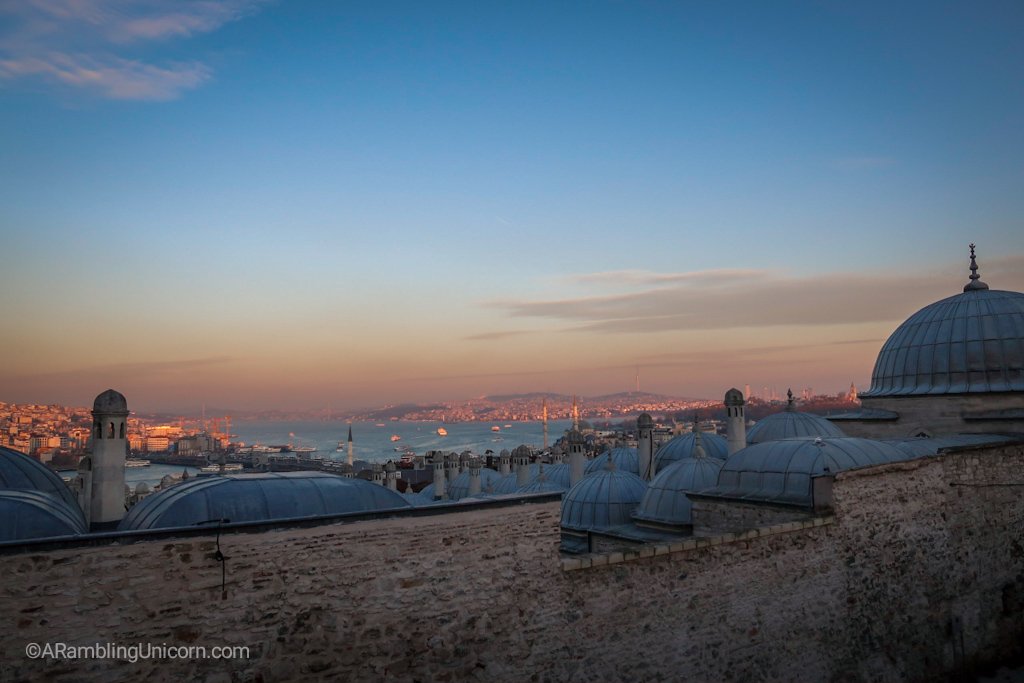
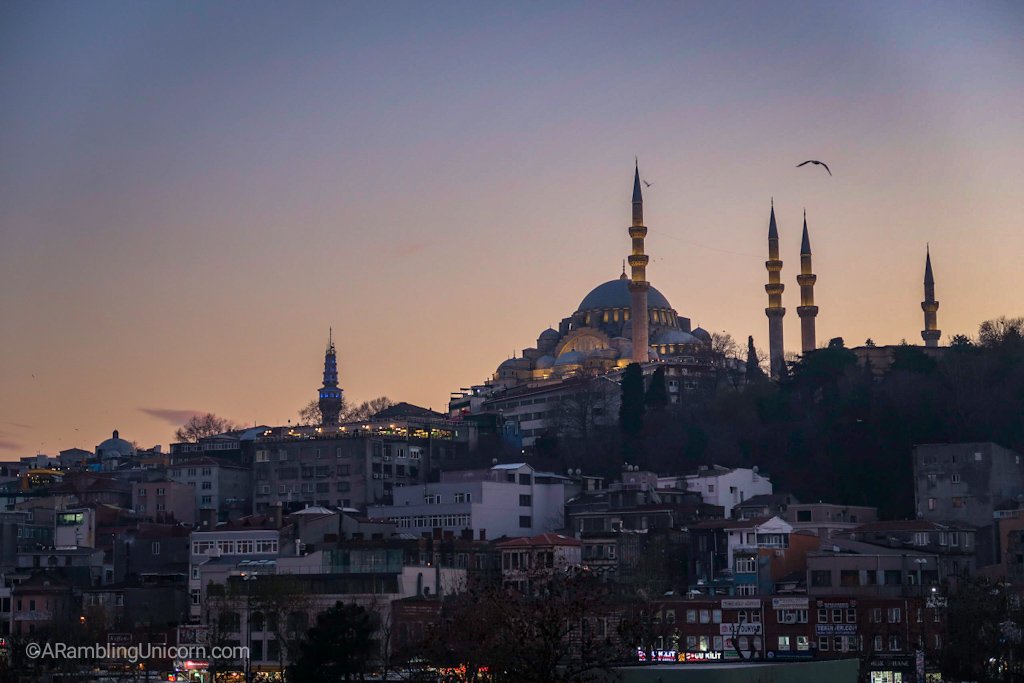
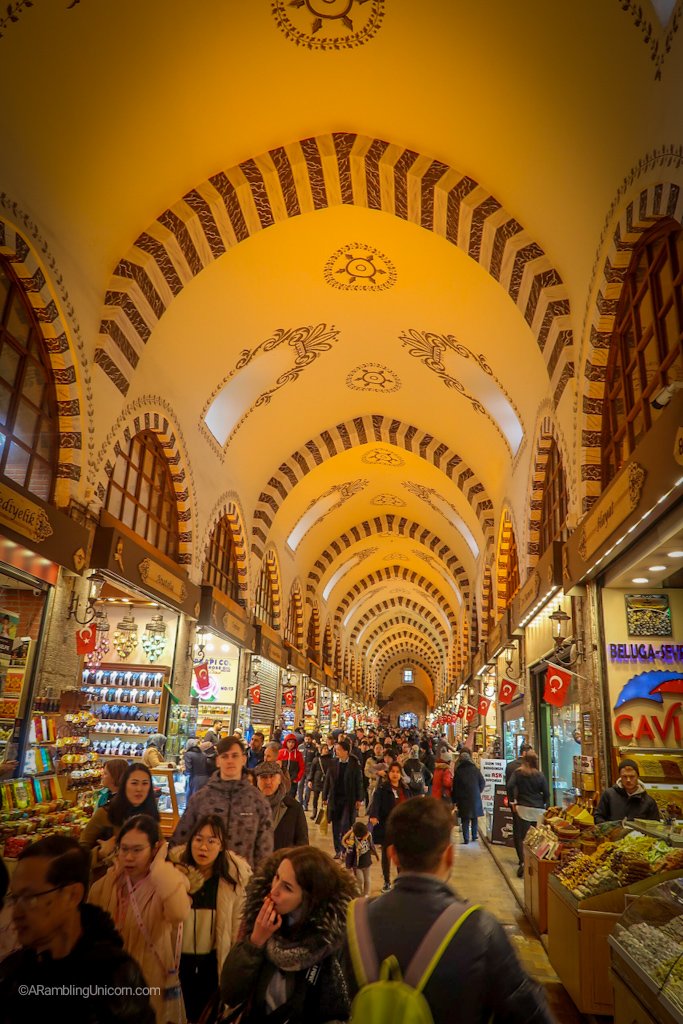
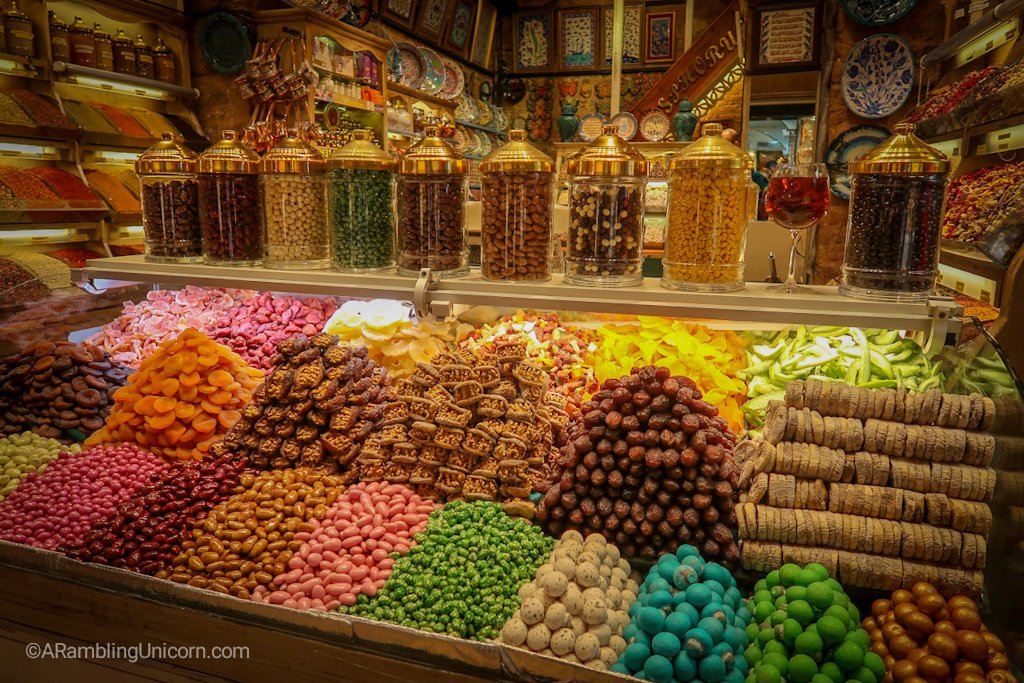
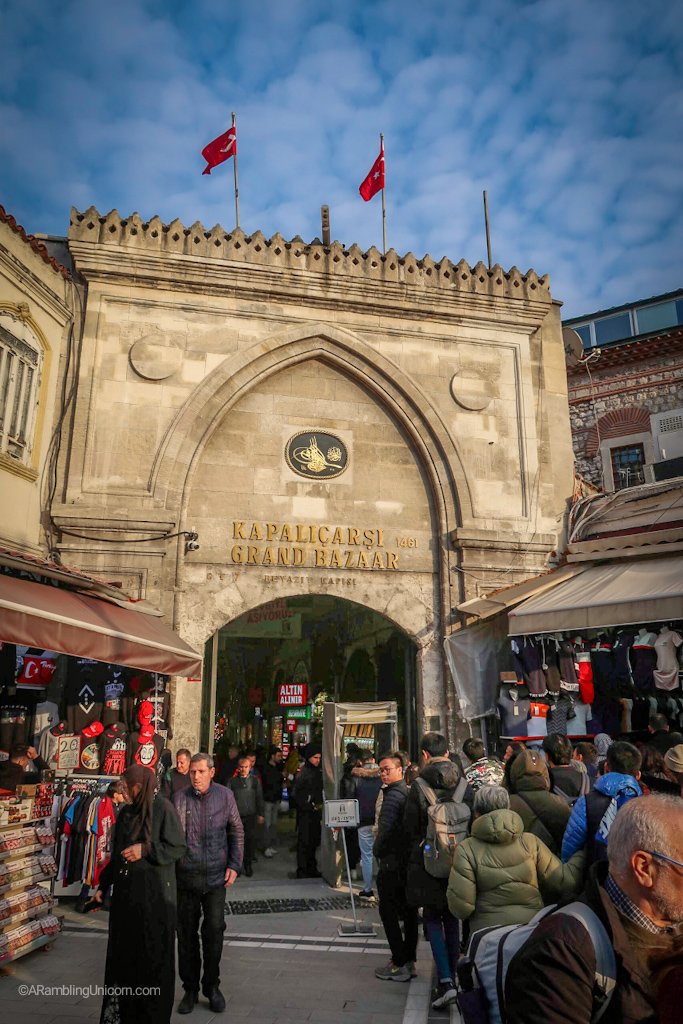
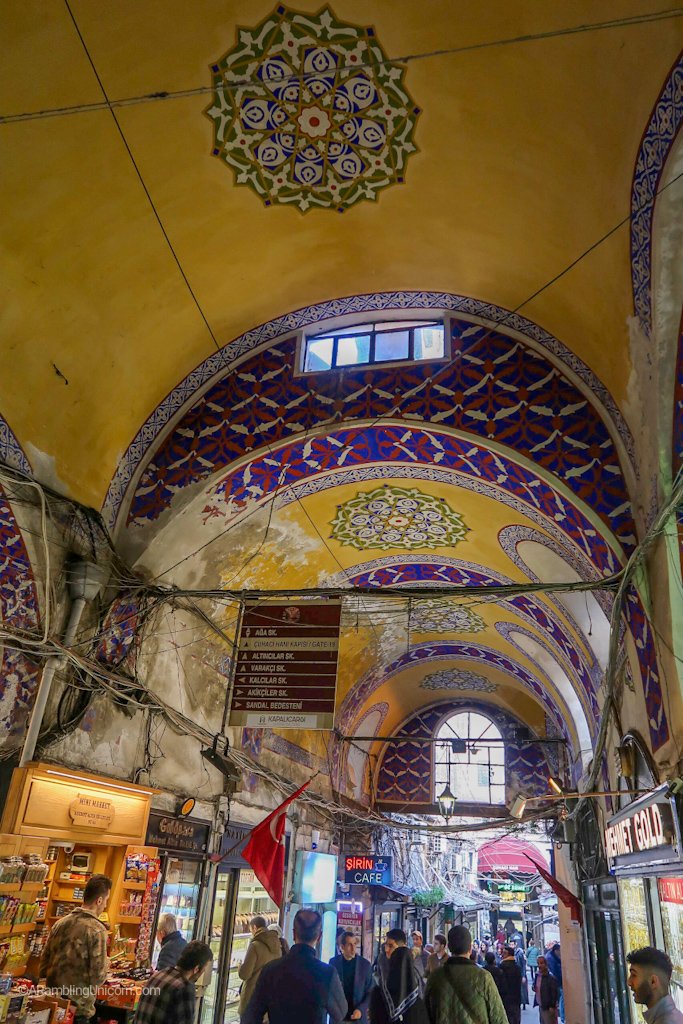
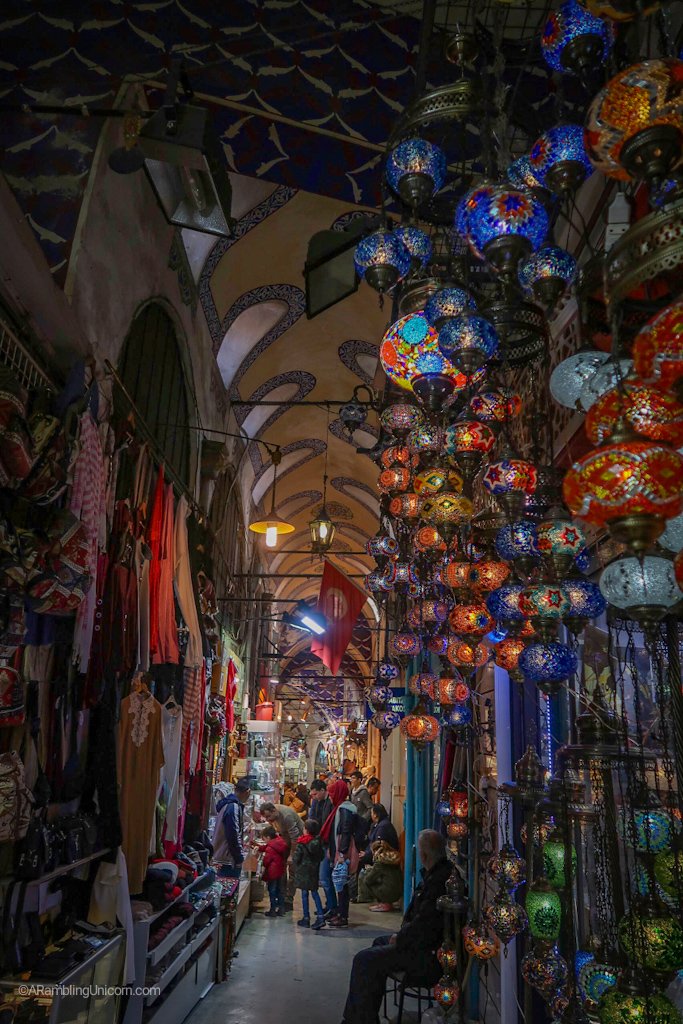
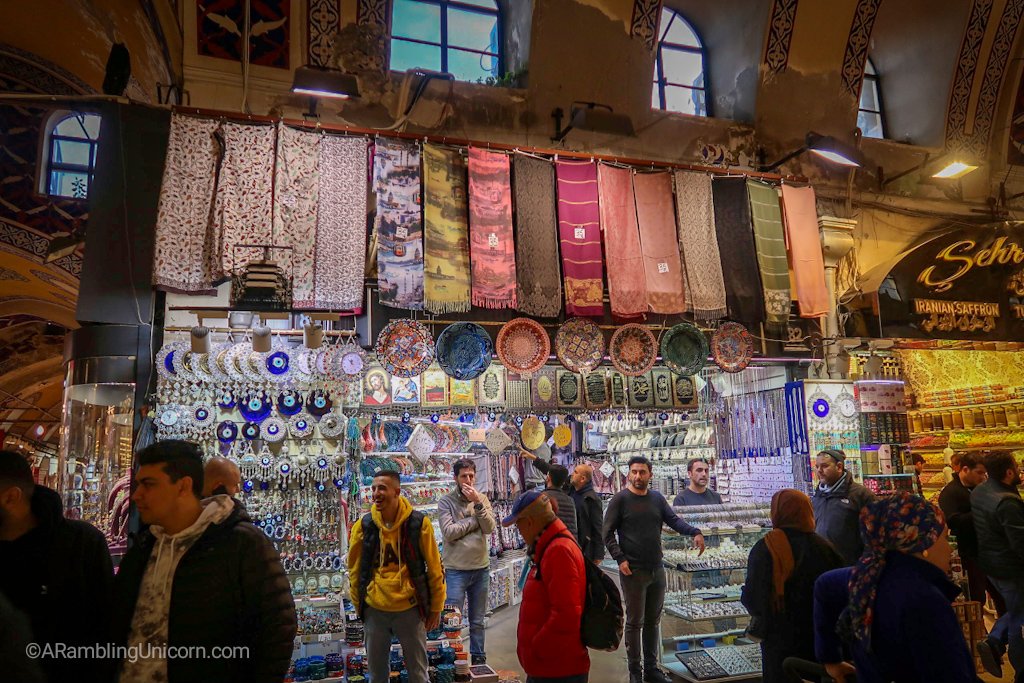
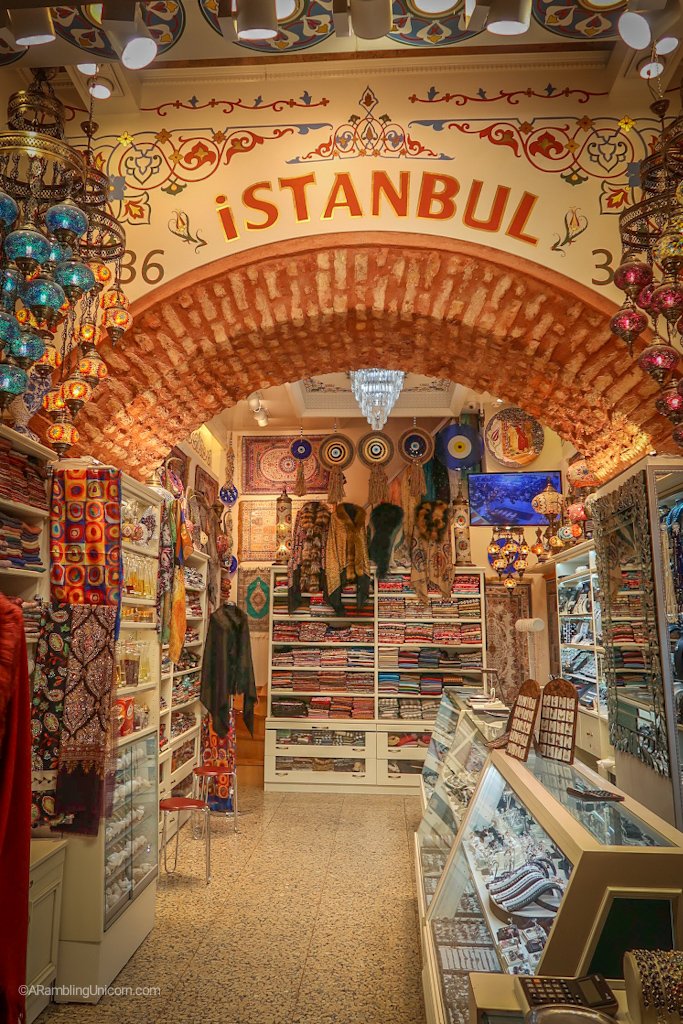
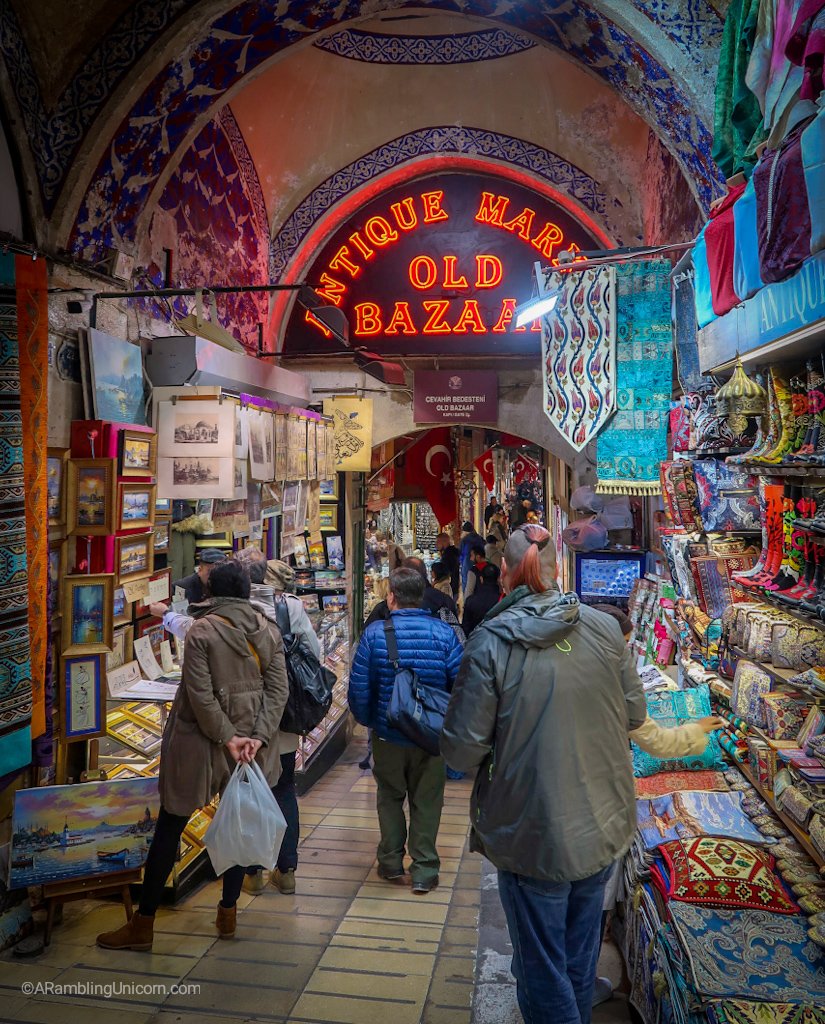
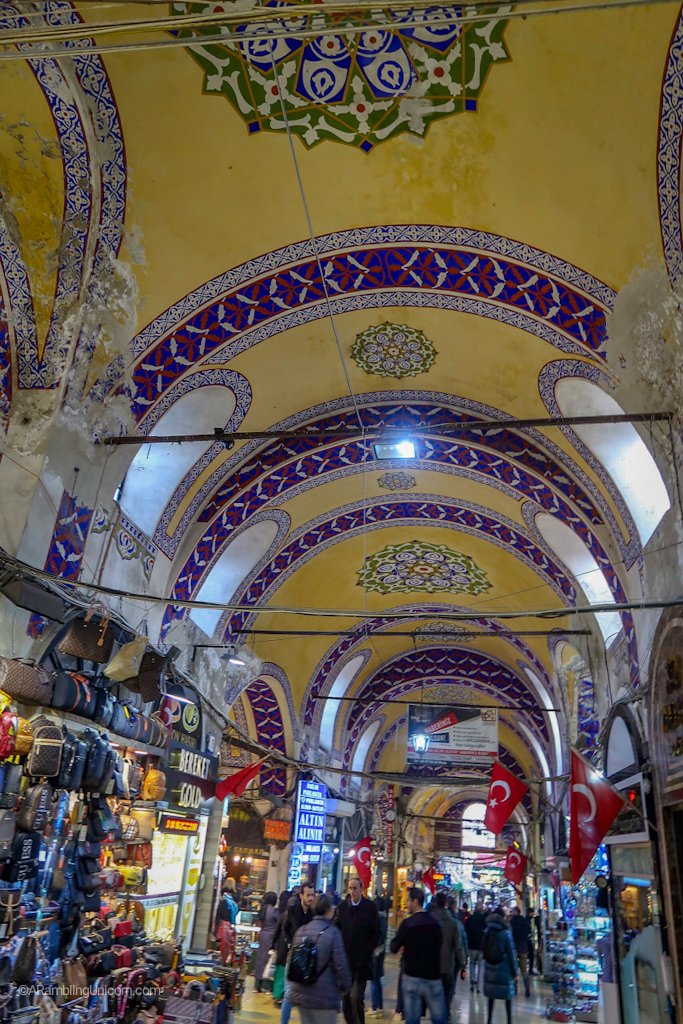
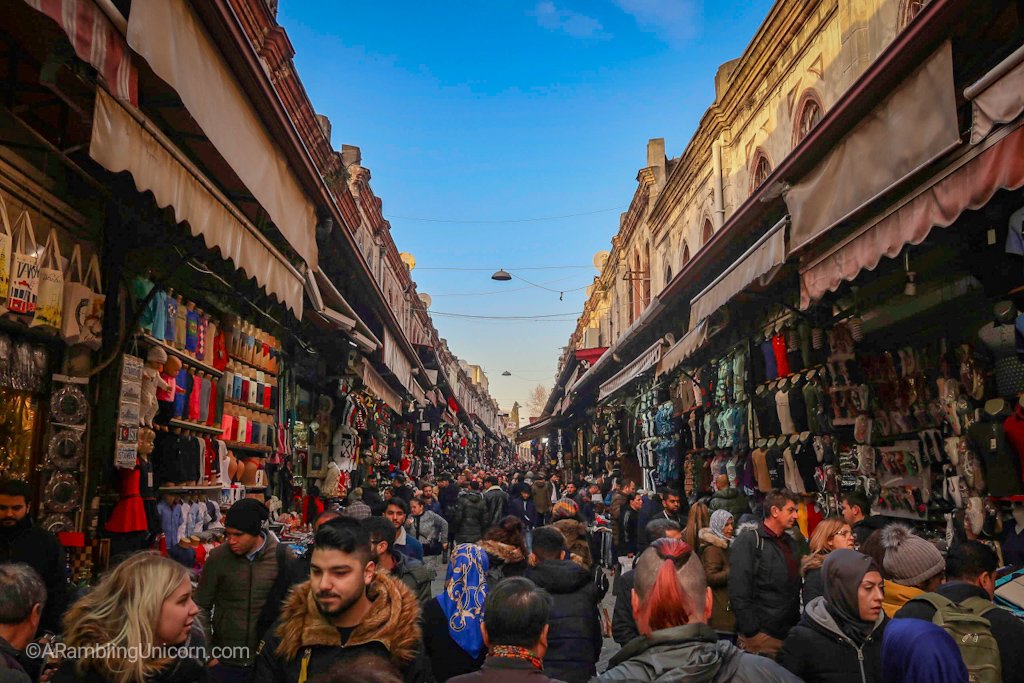
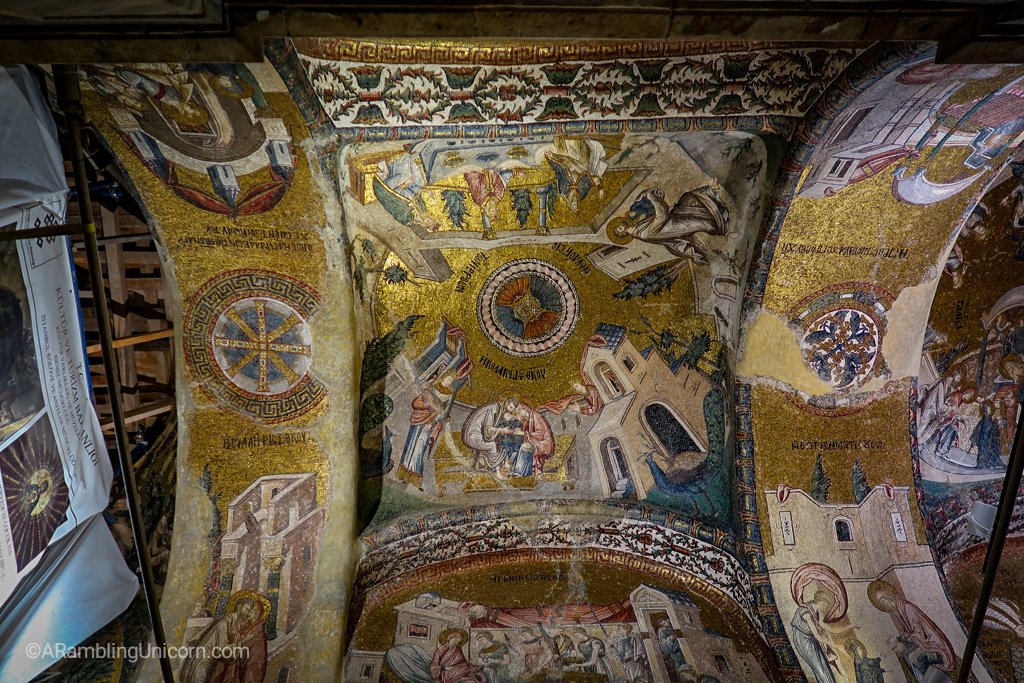
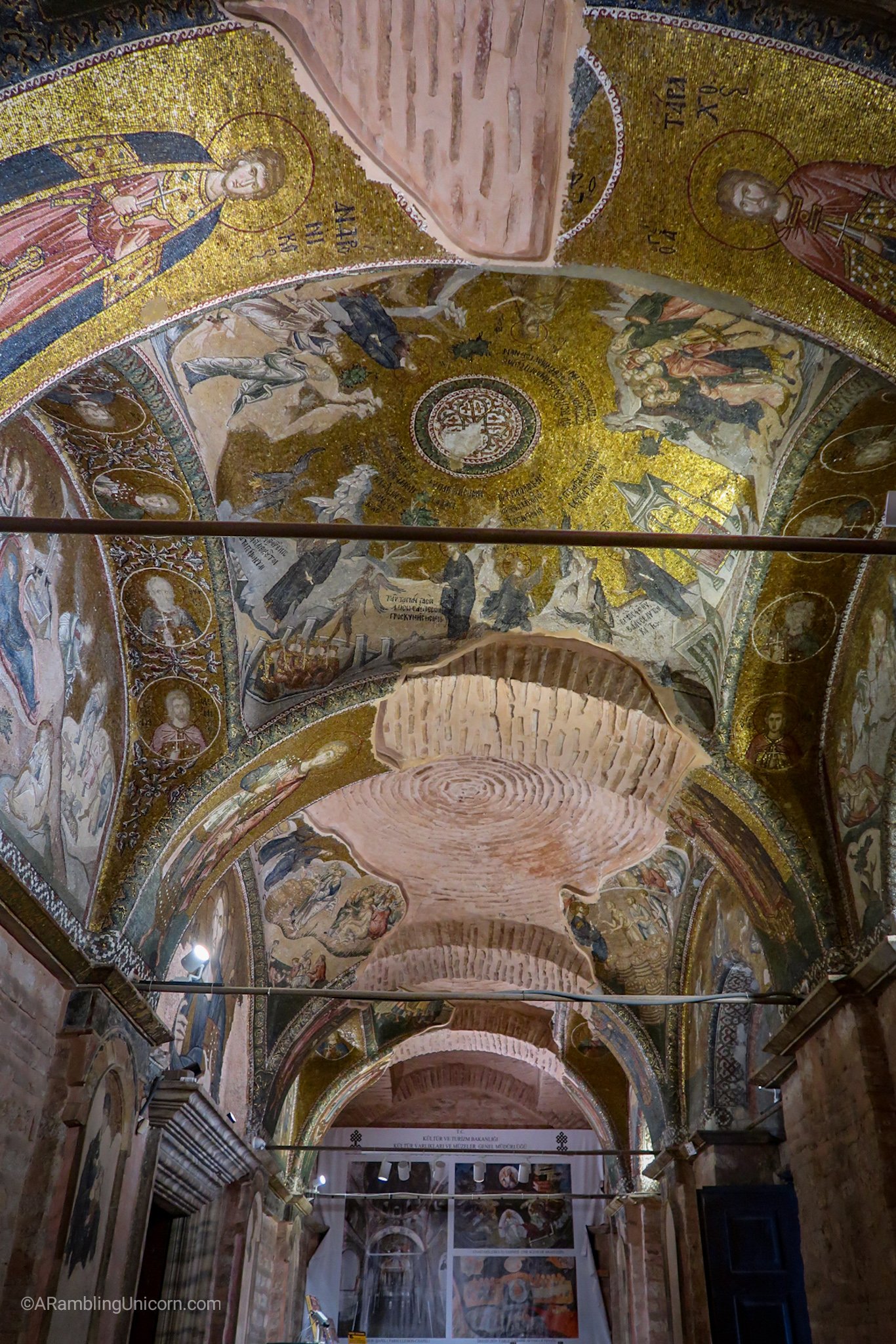
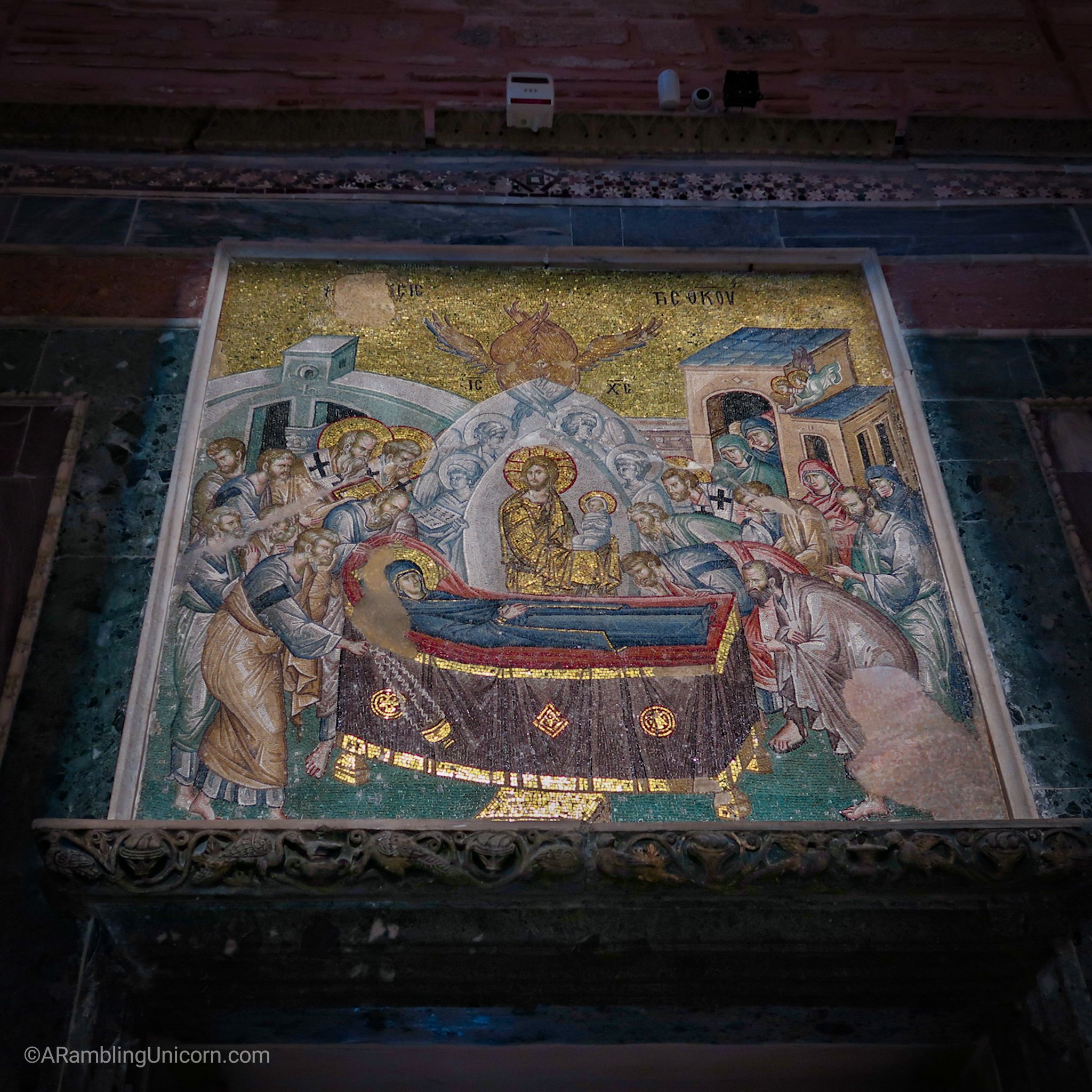
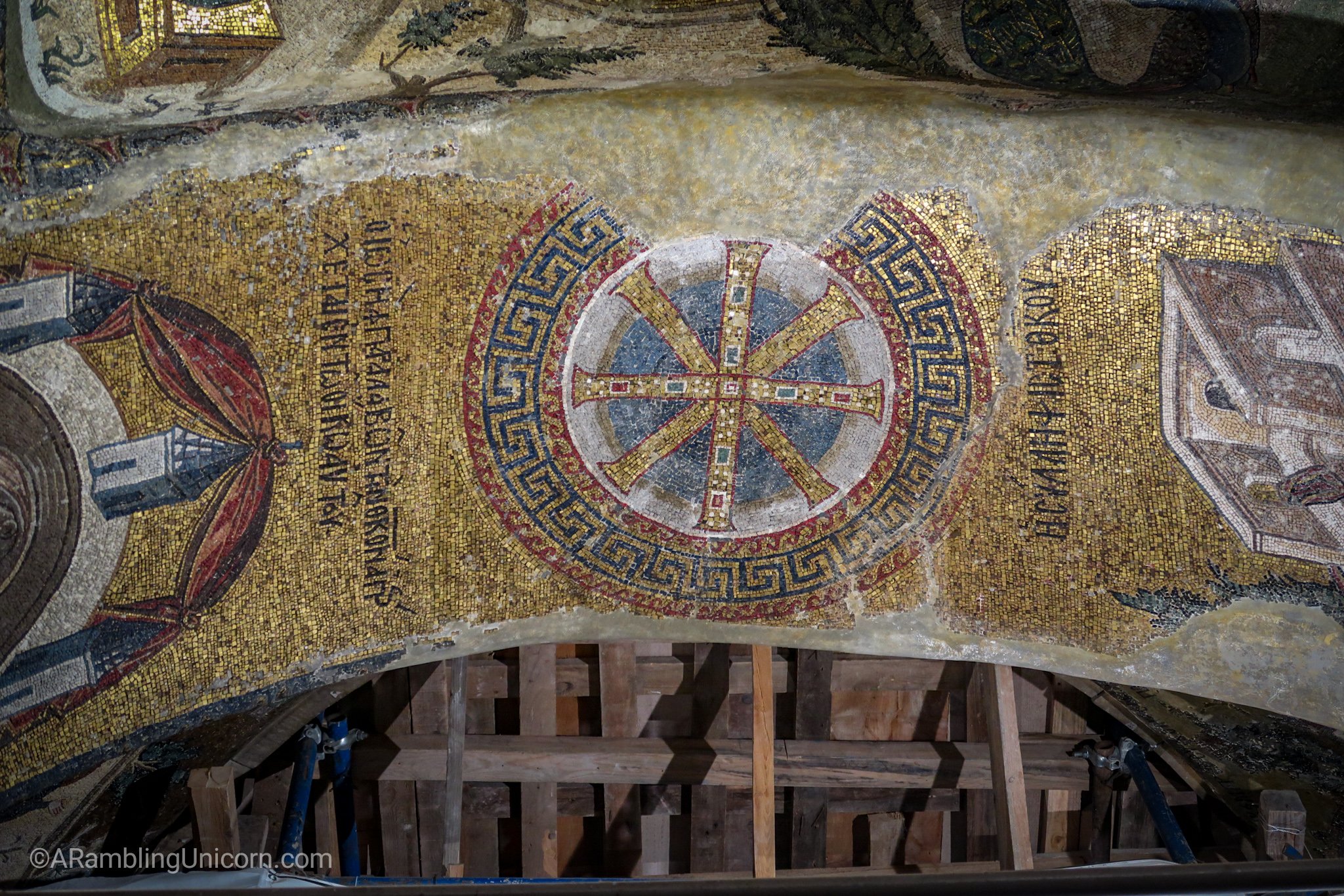
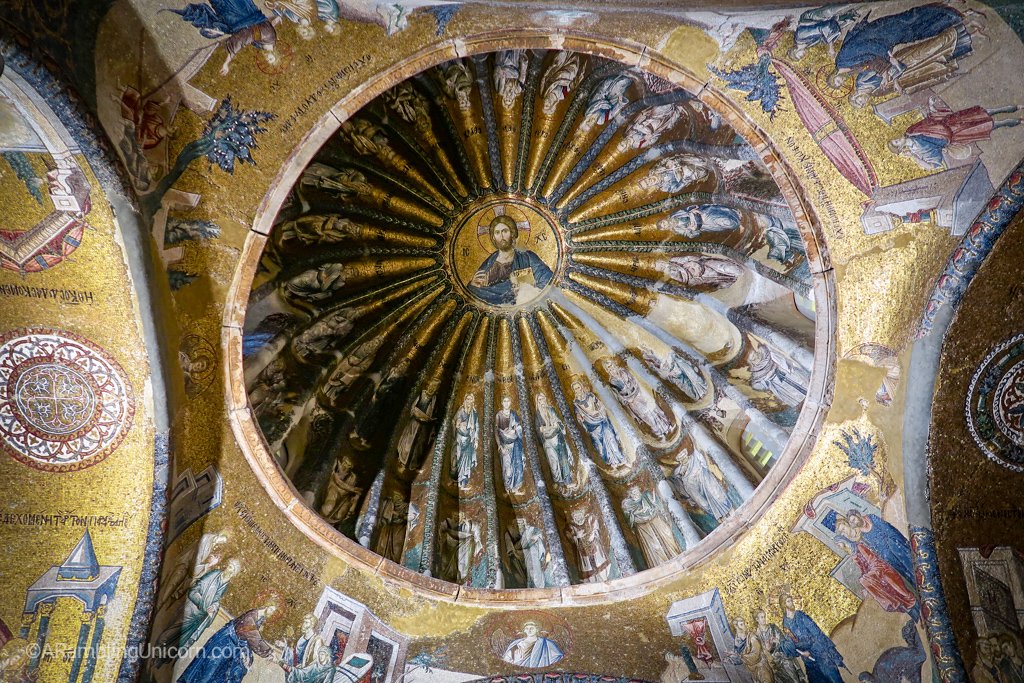
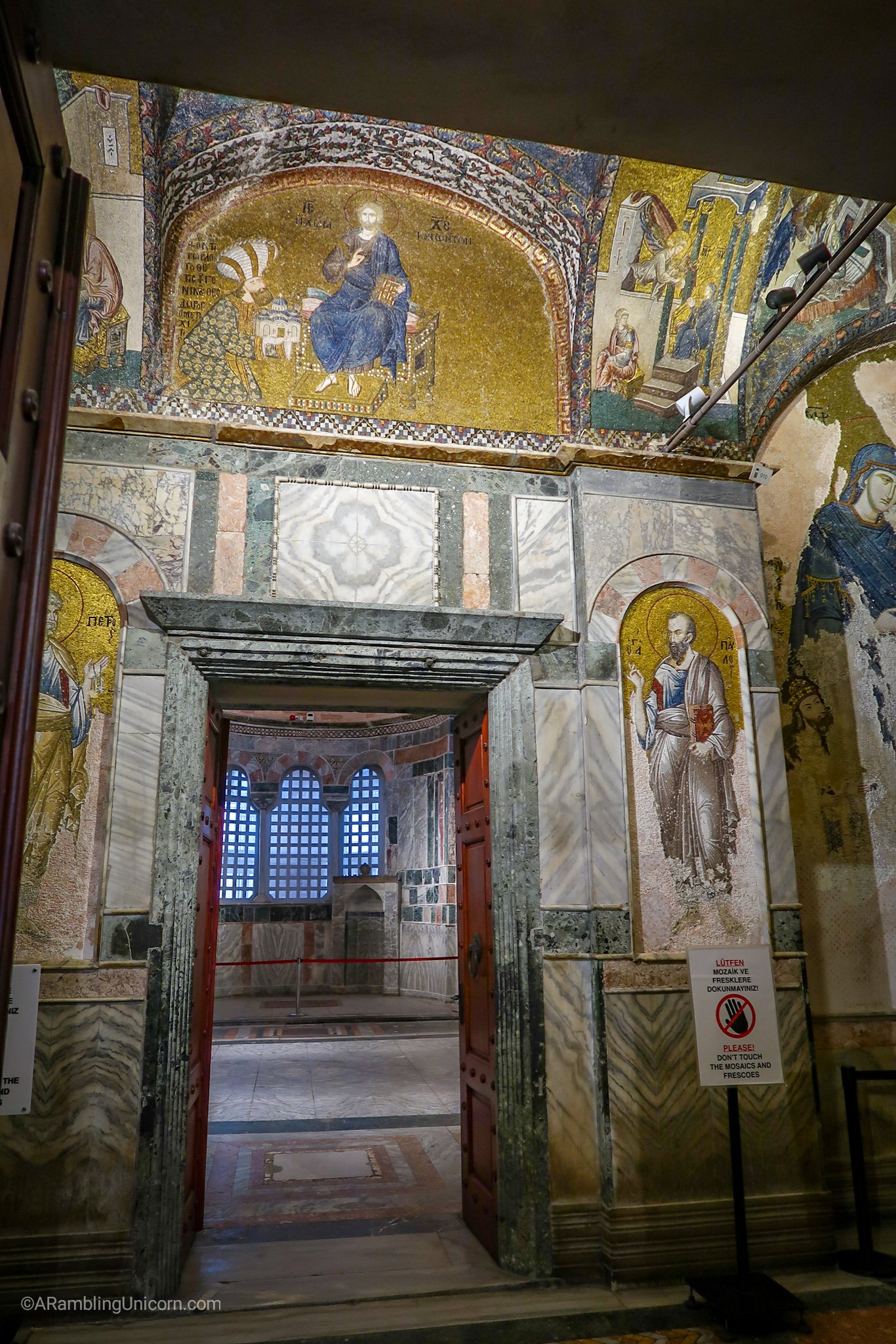

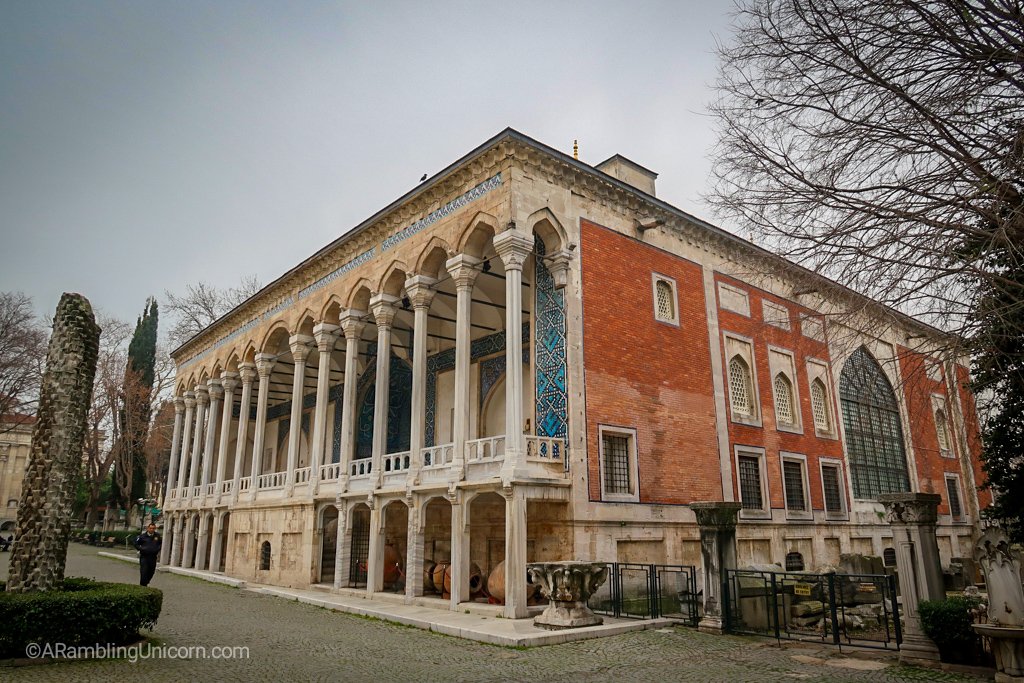

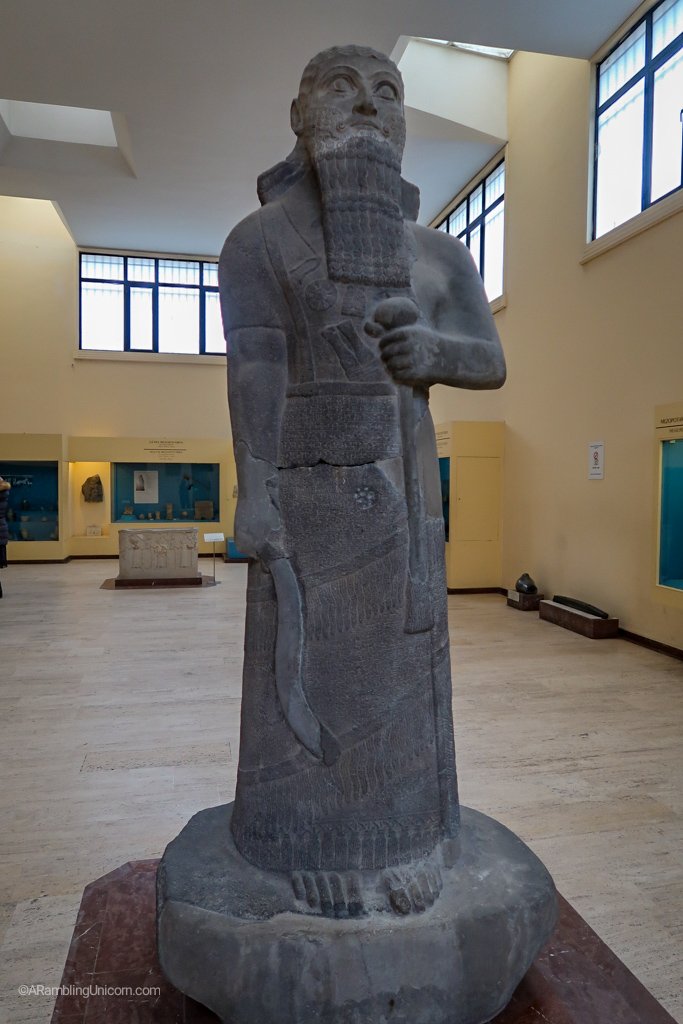
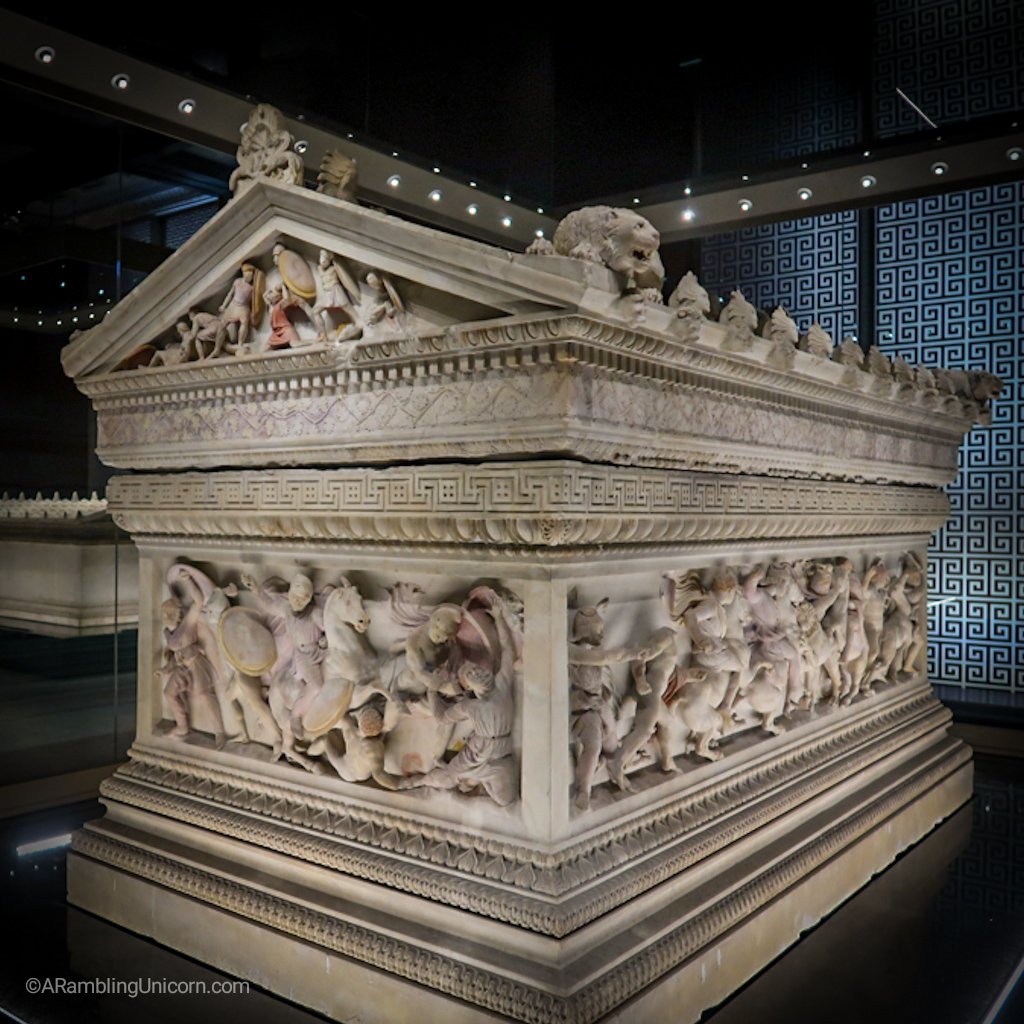
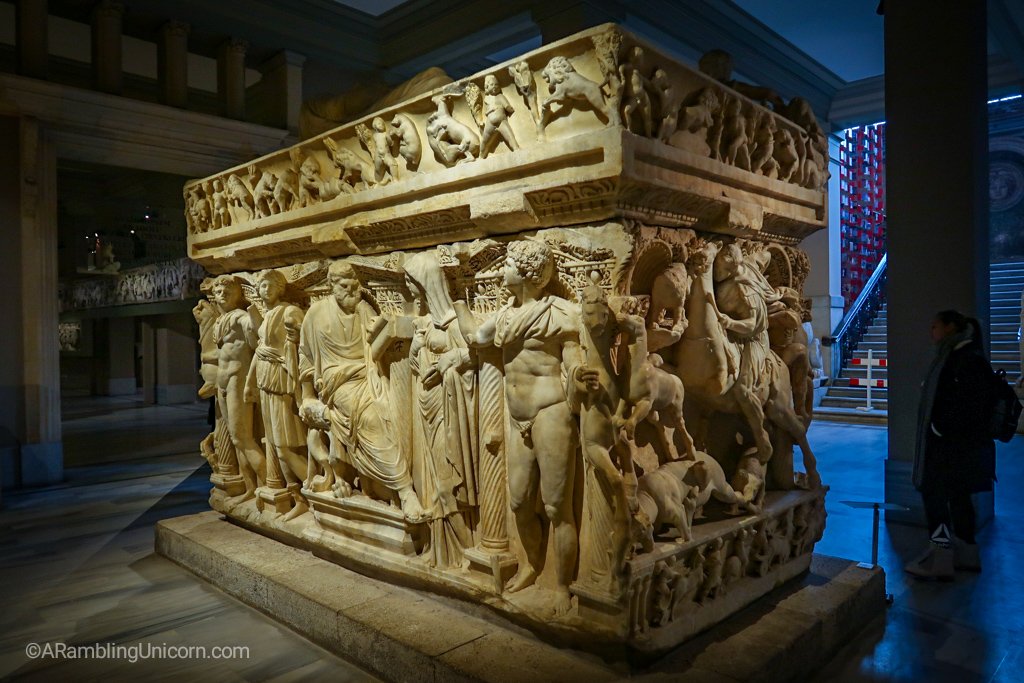
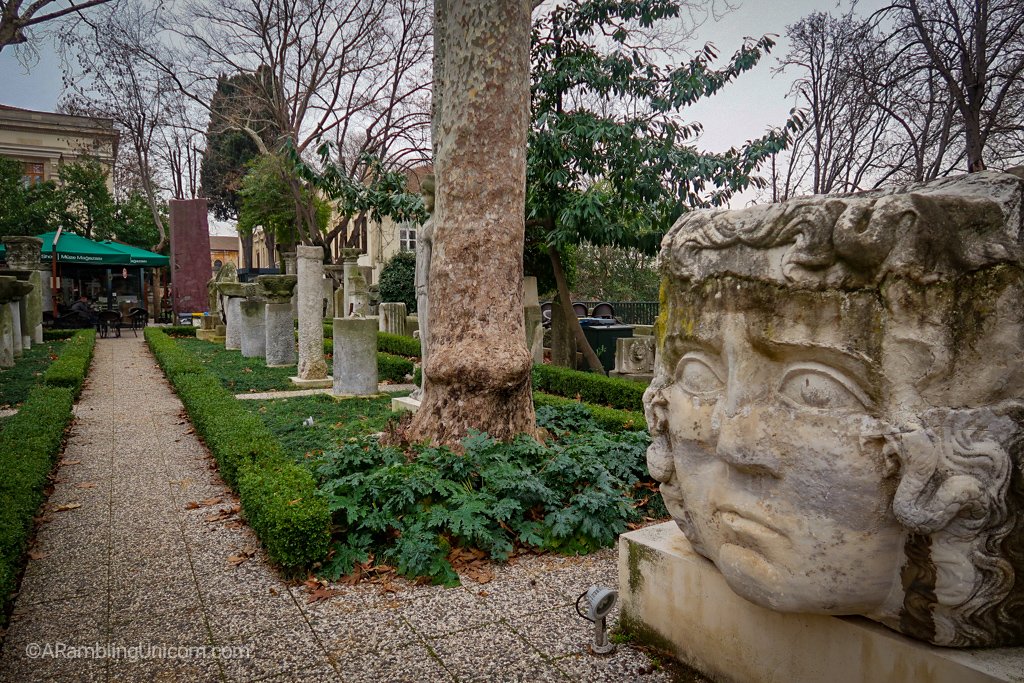
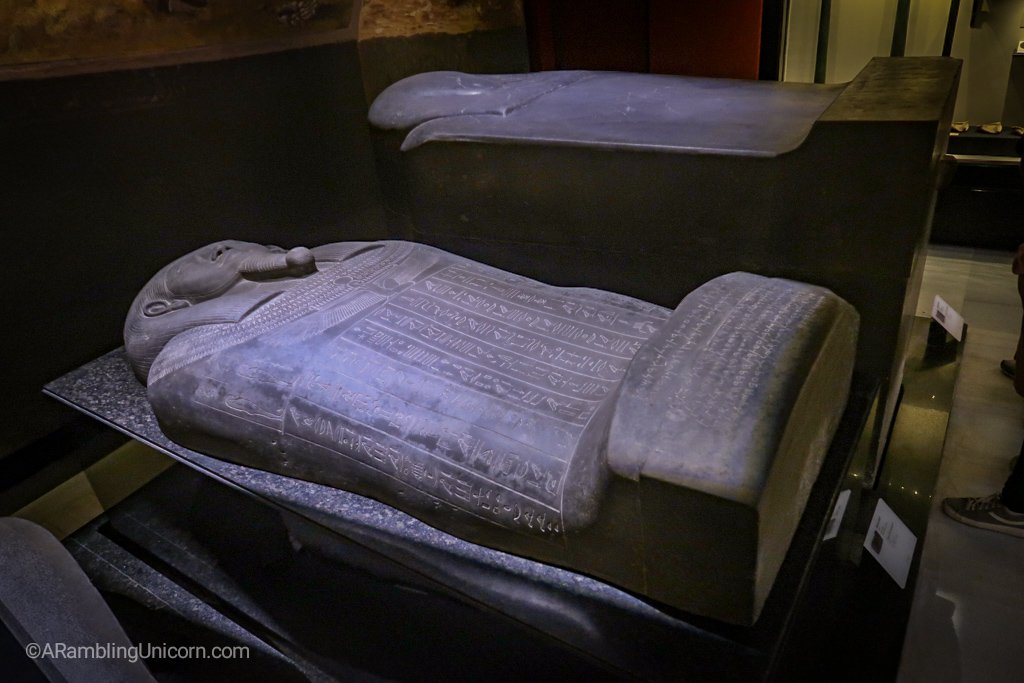
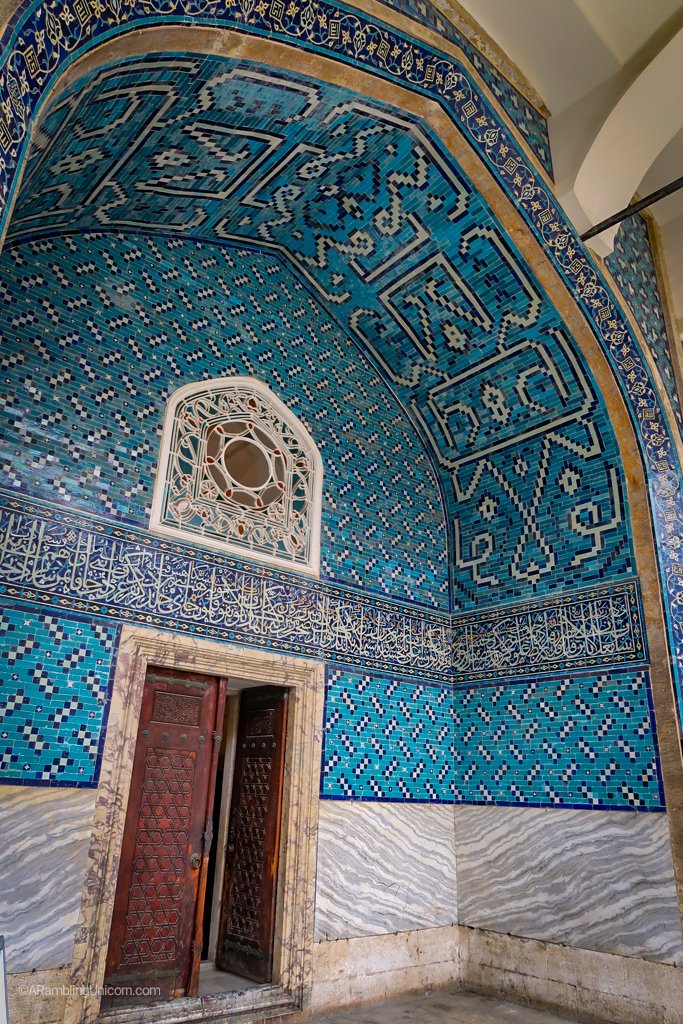
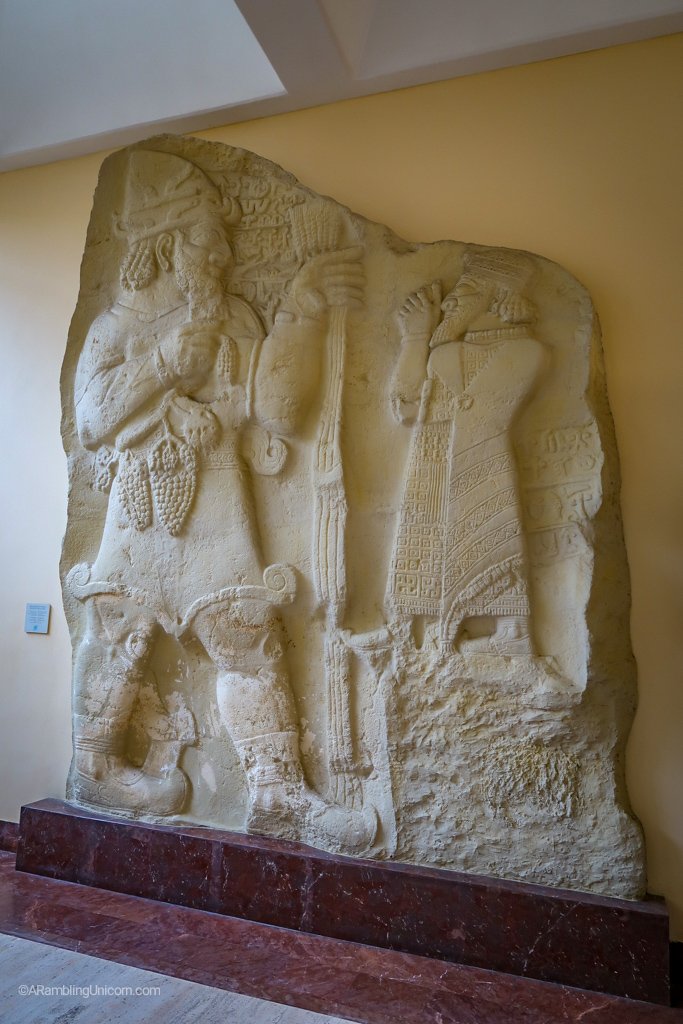
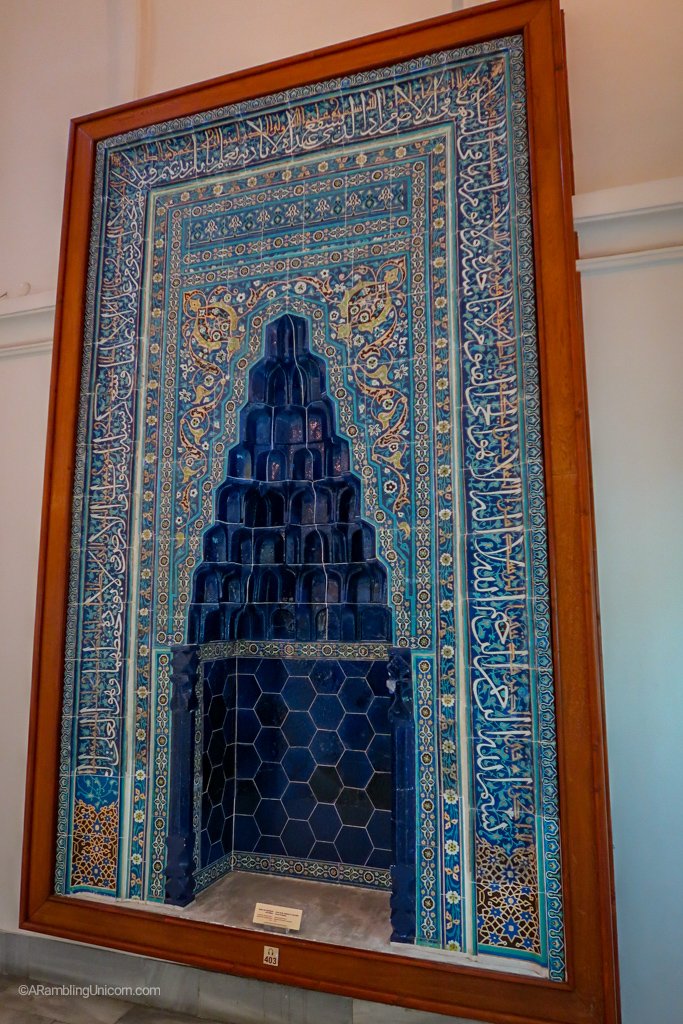
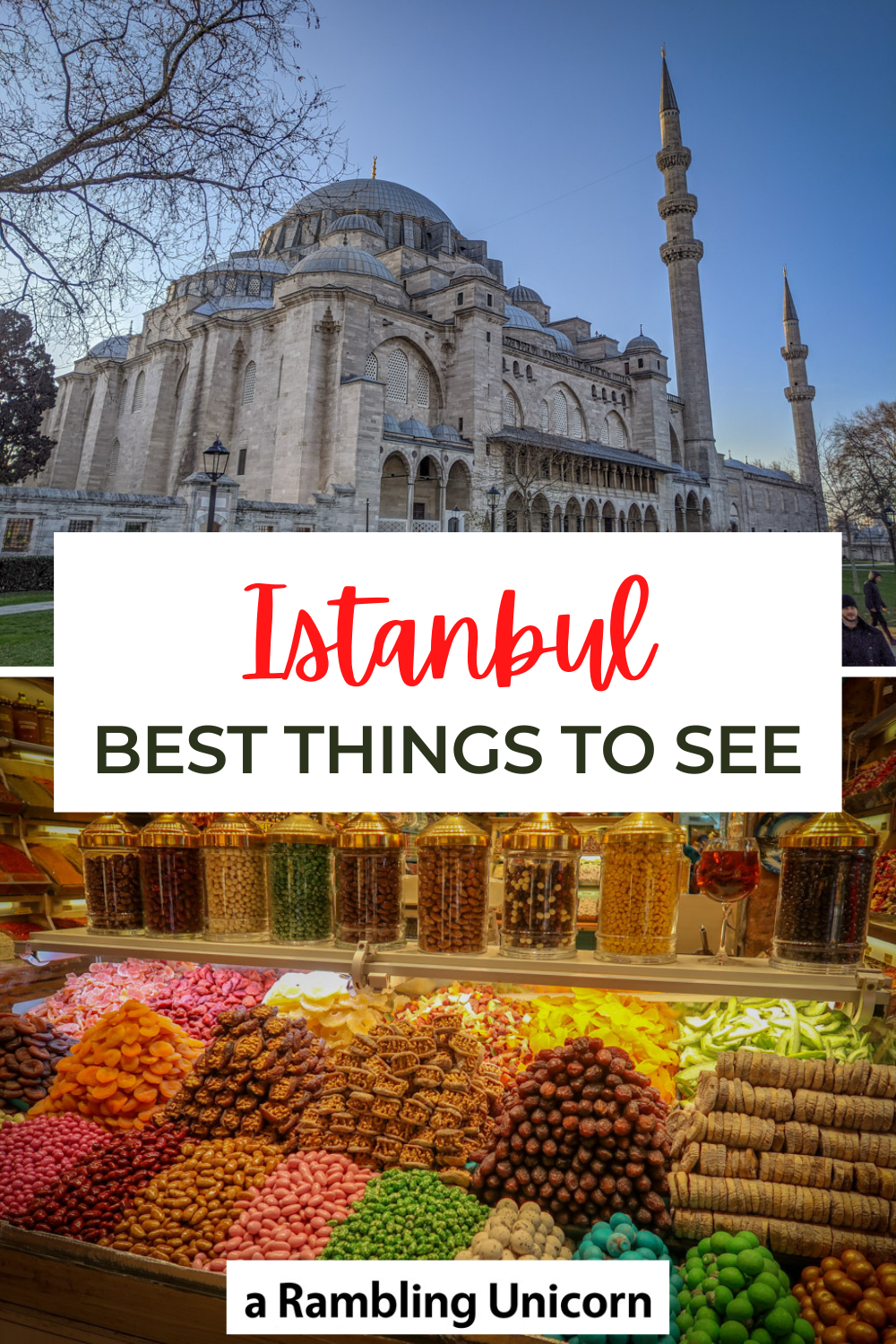
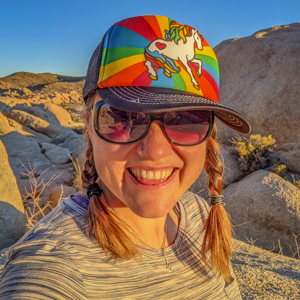
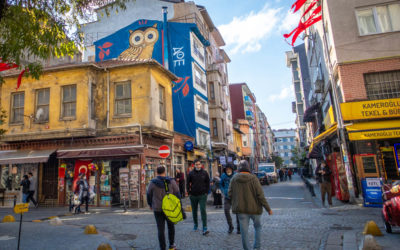
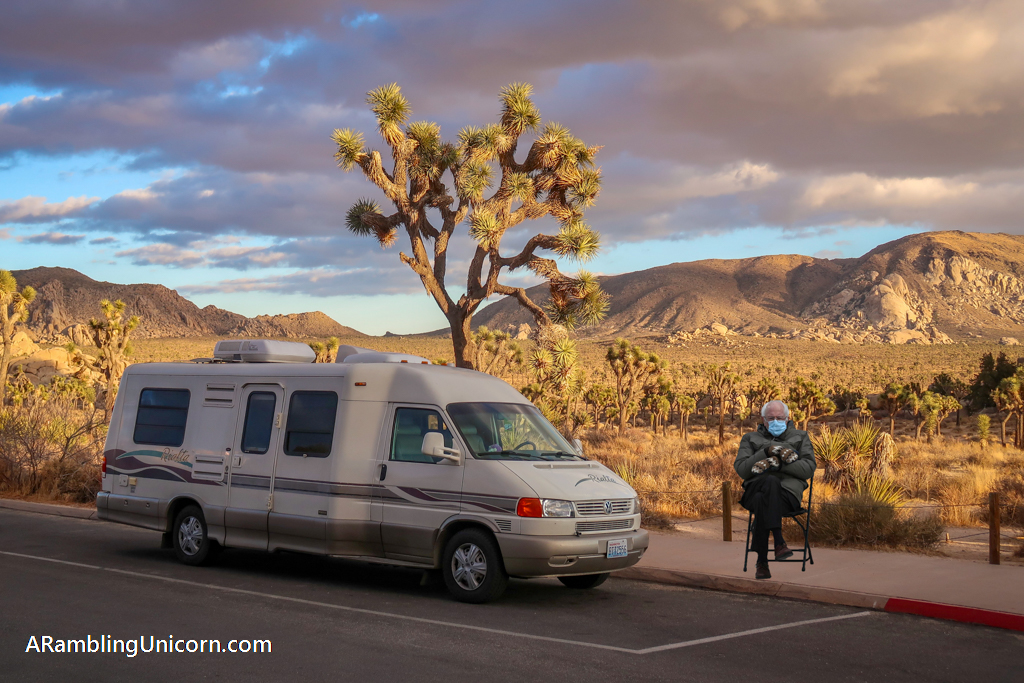
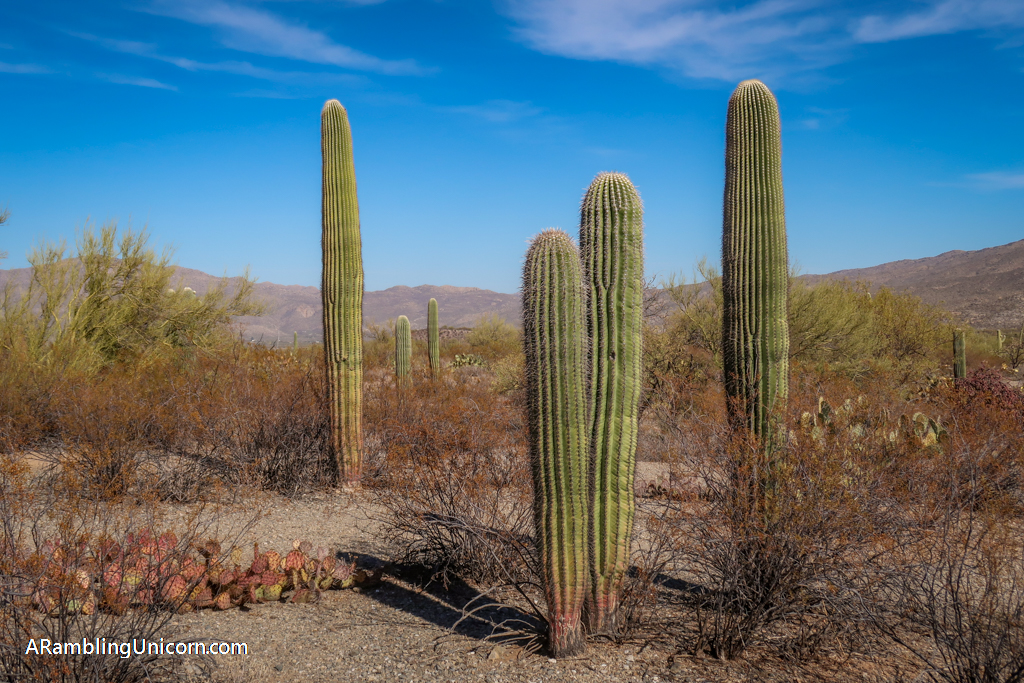

Awesome pictures
Sent from my iPad
>
Thanks Aunt Cathey! We took so many amazing photos during our trip to Istanbul. I actually had to leave most of them out of this post our it would have been outrageously long lol 😂.
That is other worldly! I had no idea it was so beautiful!
Thanks Megan!
What an amazing post, thanks so much for sharing this! Istanbul looks beautiful and I can’t wait to visit someday soon!
Thanks Emma!
Sometimes the touristy things are popular for good reason, which seems to be the case in Istanbul. We also generally avoid the popular tourist destinations, but in some cases they are a must see and experience. Beautiful photos! I am intrigued by the whirling Dervish performance/ceremony – I’d love to see one.
Thanks Emese! Yes the Whirling Dervish ceremony was really fascinating. I highly recommend it ☺ï¸
Istanbul’s architecture looks so beautiful!! I can’t get over the mosaics in the Hagia Sophia and the blue tiles in the Tokapi Palace! I’d love to visit Istanbul to see those things alone!
Thanks for the comment!
Beautiful photos! I hope I have the chance to visit Turkey one day, it looks incredible.
Thanks Riley, I highly recommend it ☺ï¸
This is perfect. Adding it to my Turkey bucket list!
Thanks Mona!
Really beautiful photos!
Thanks Holly!
The photos are so beautiful that I want to go back and see these things all over again! (I was there VERY long time ago!)
Thanks Cherene! It’s such a lovely city.